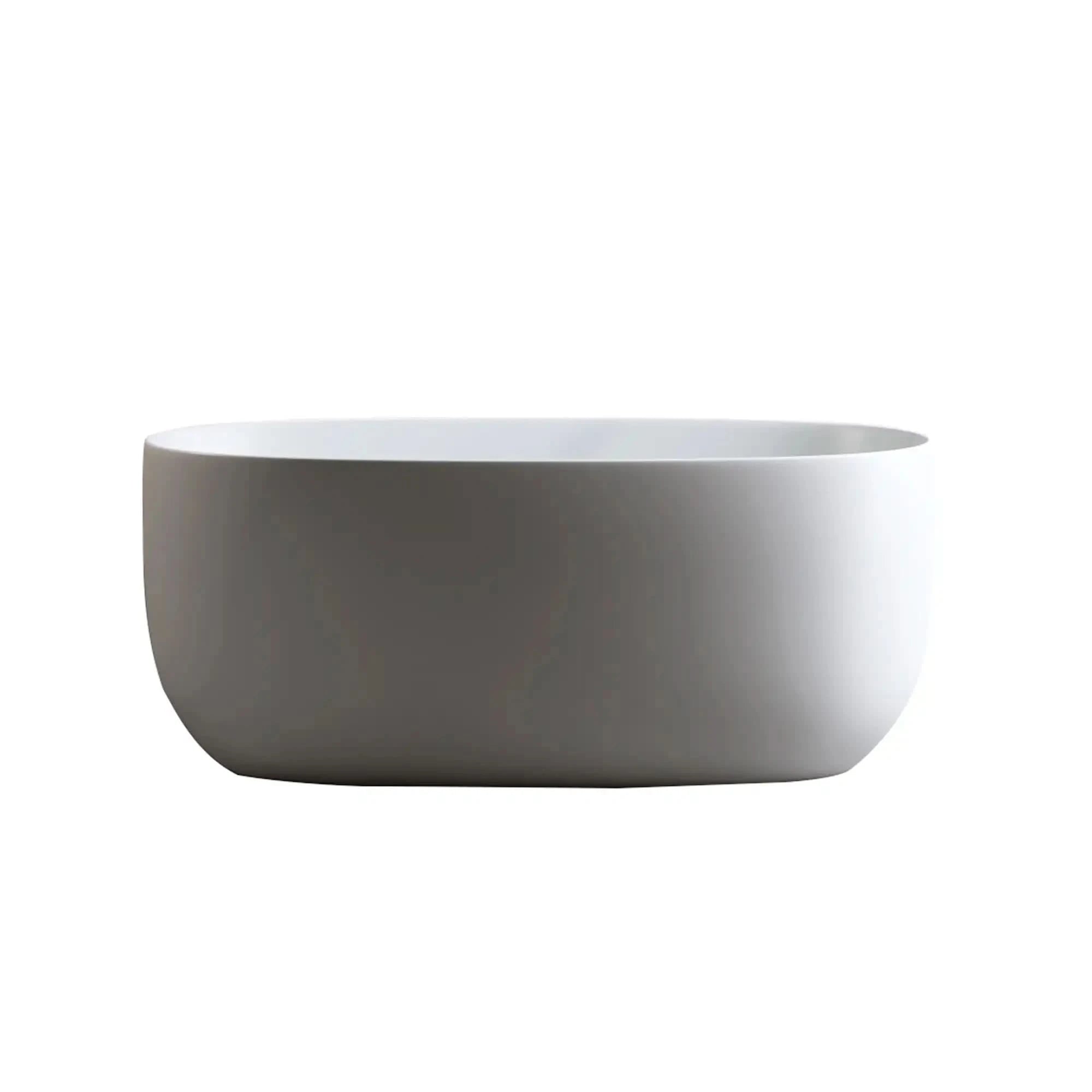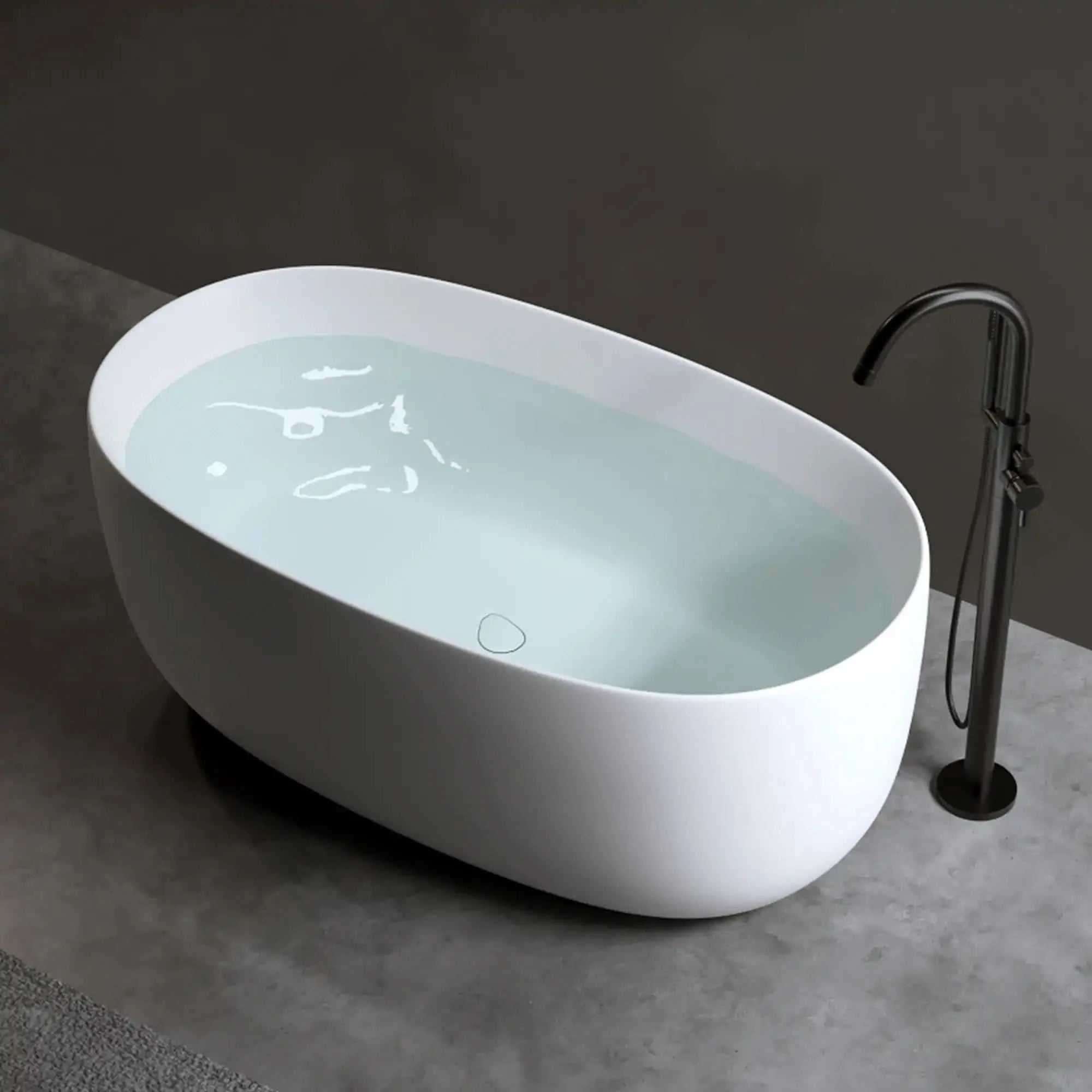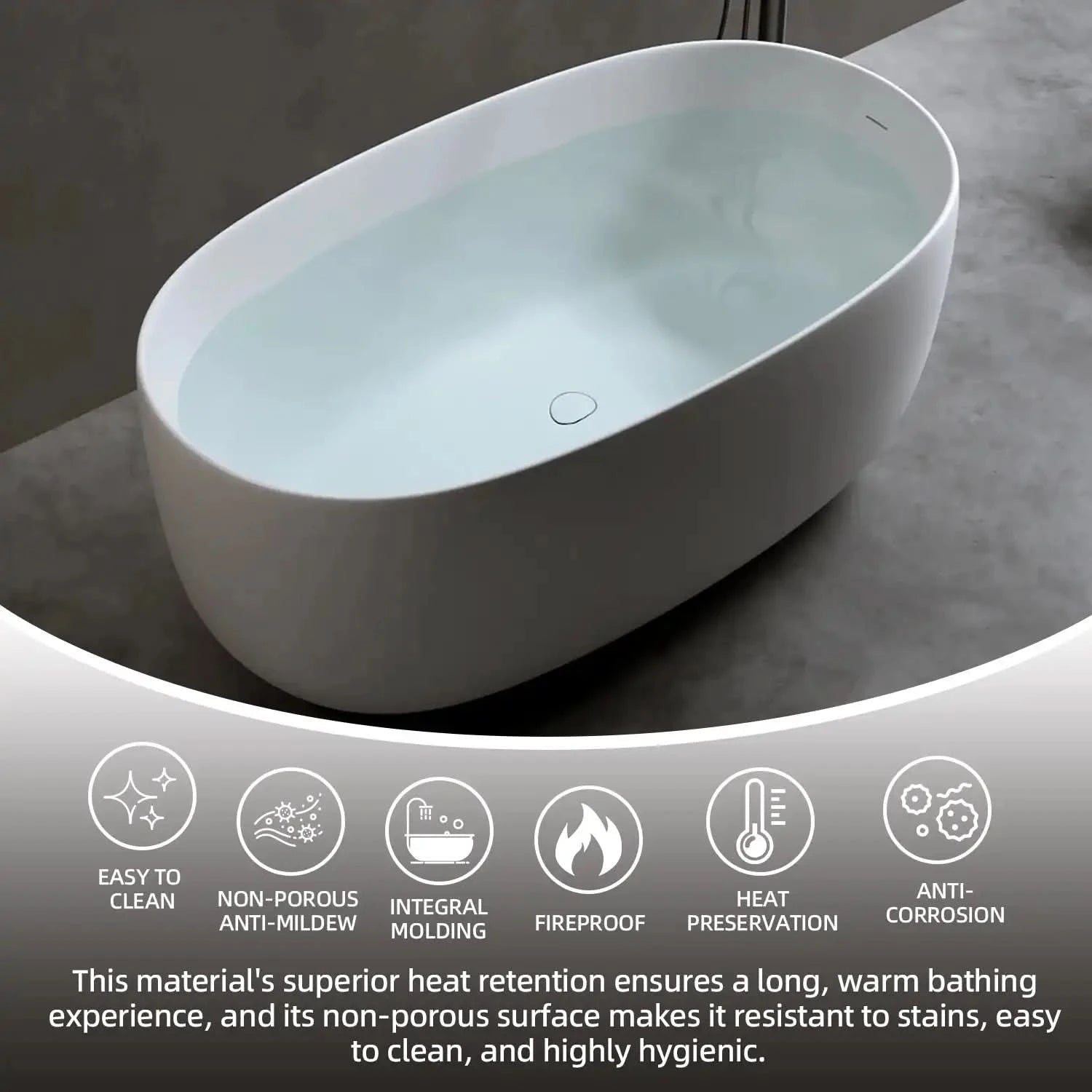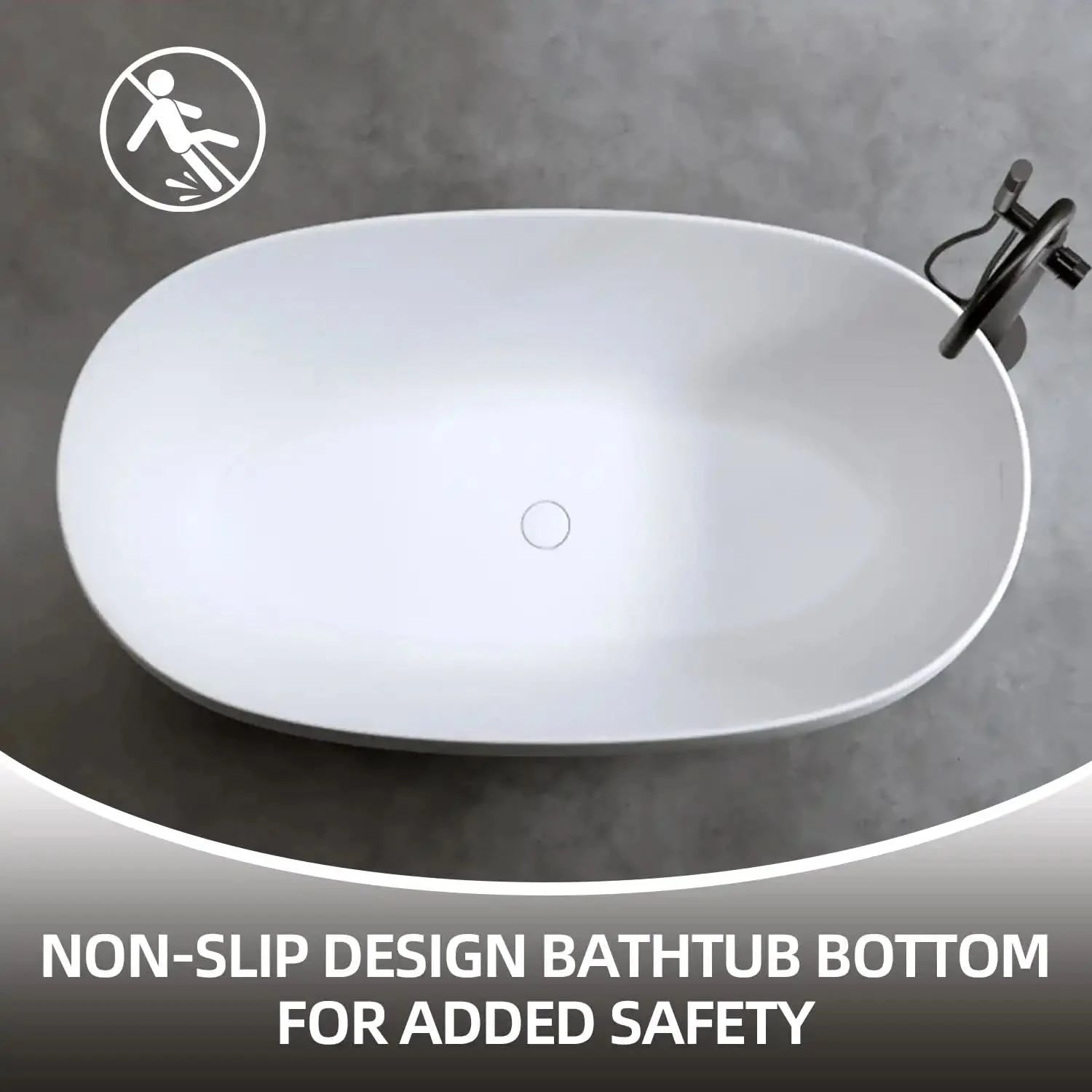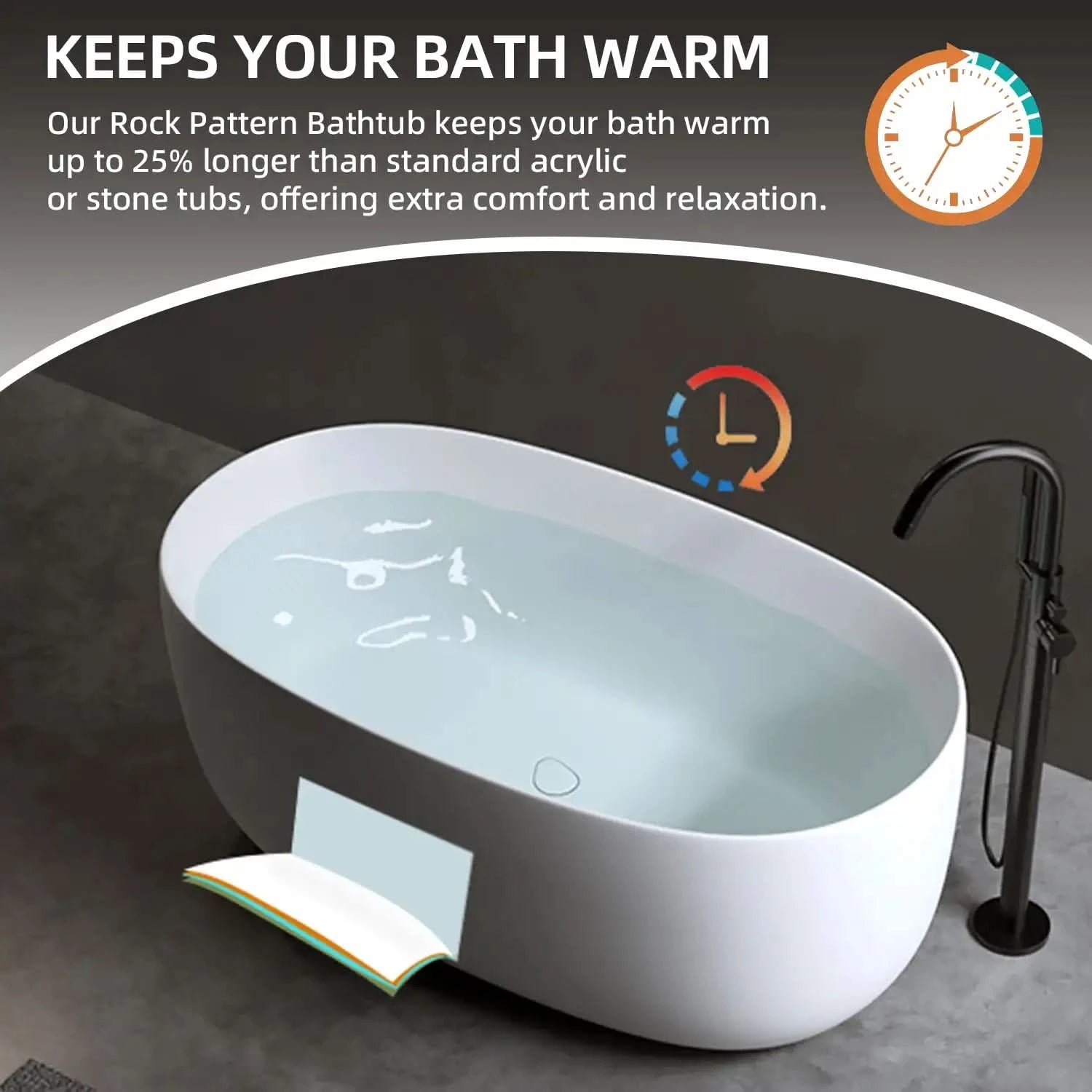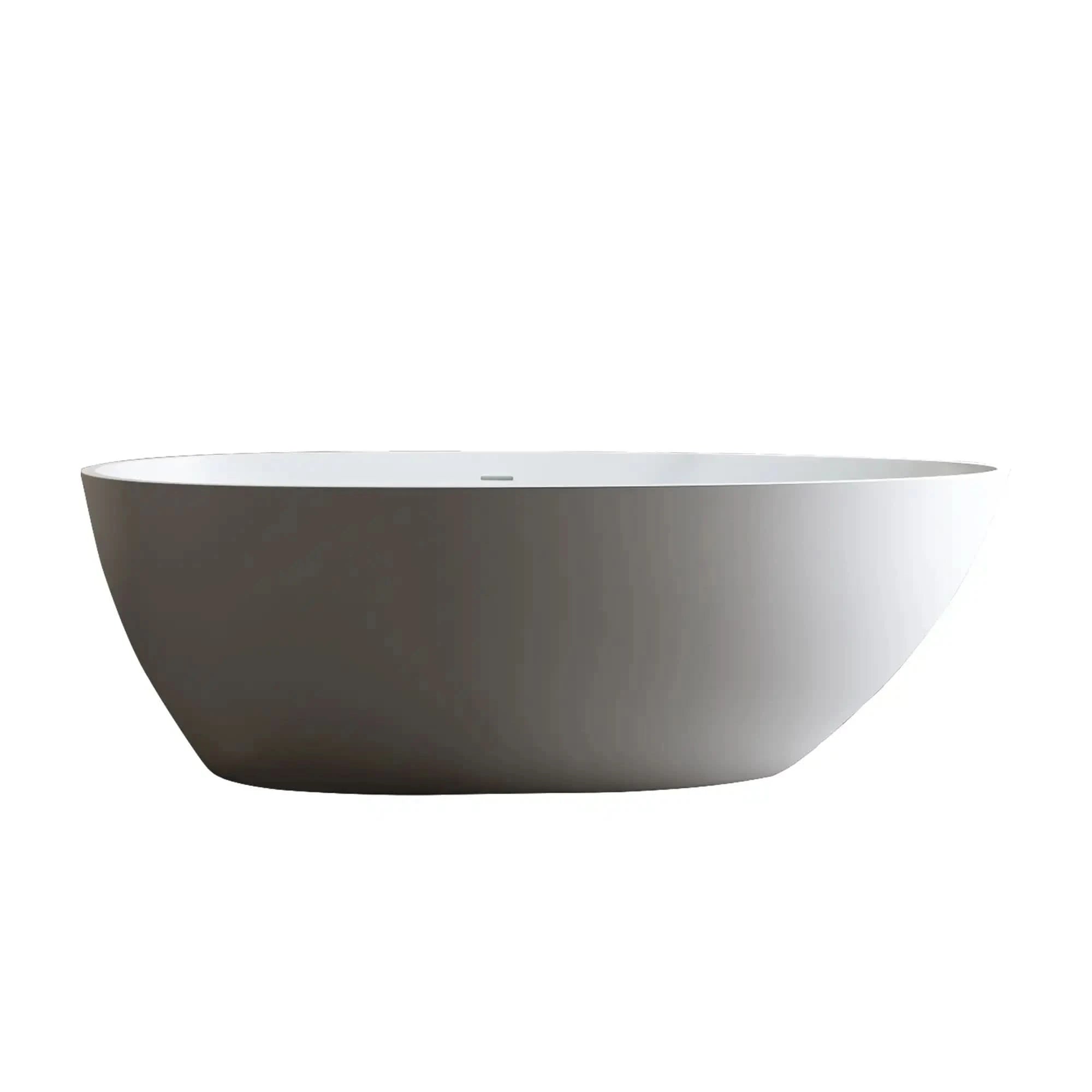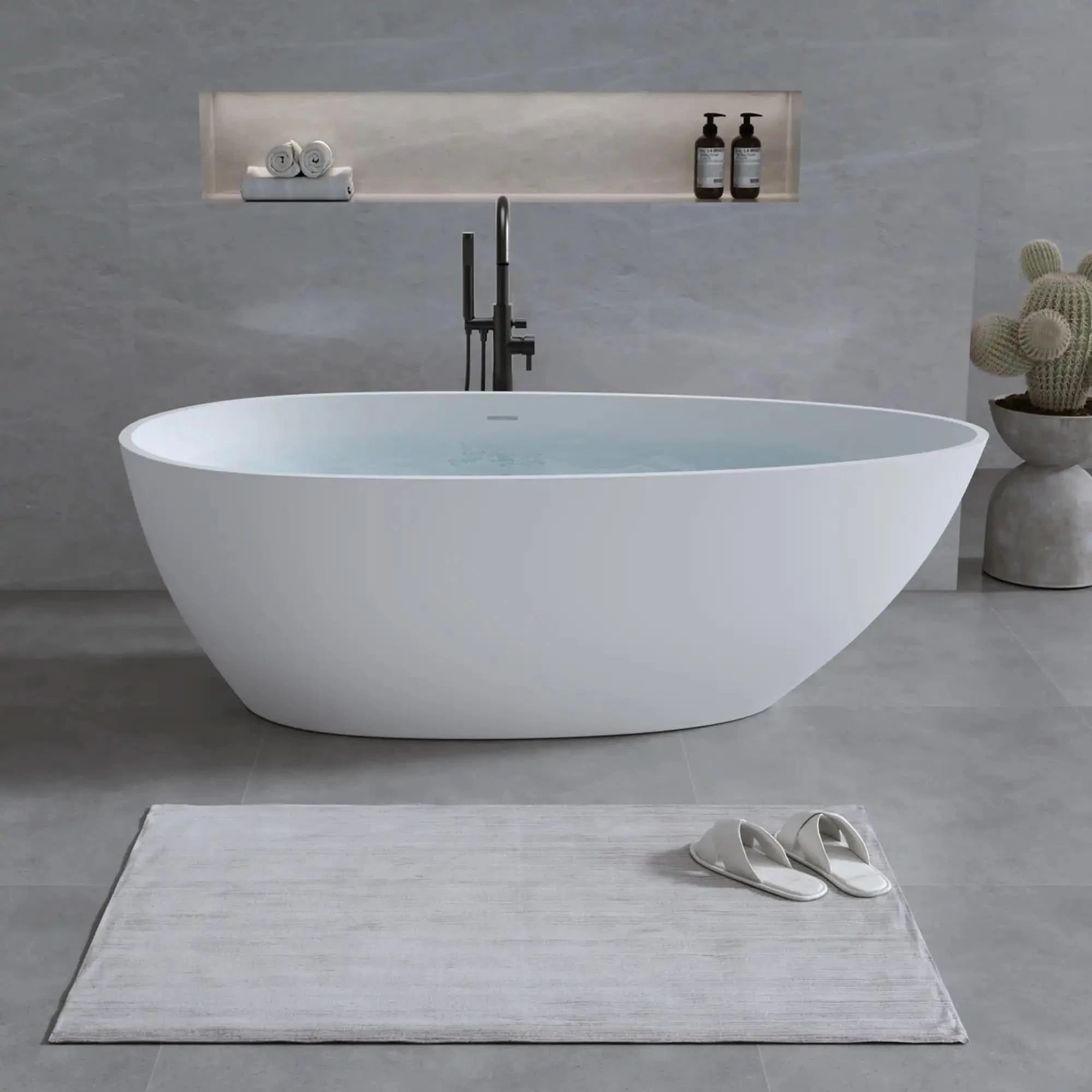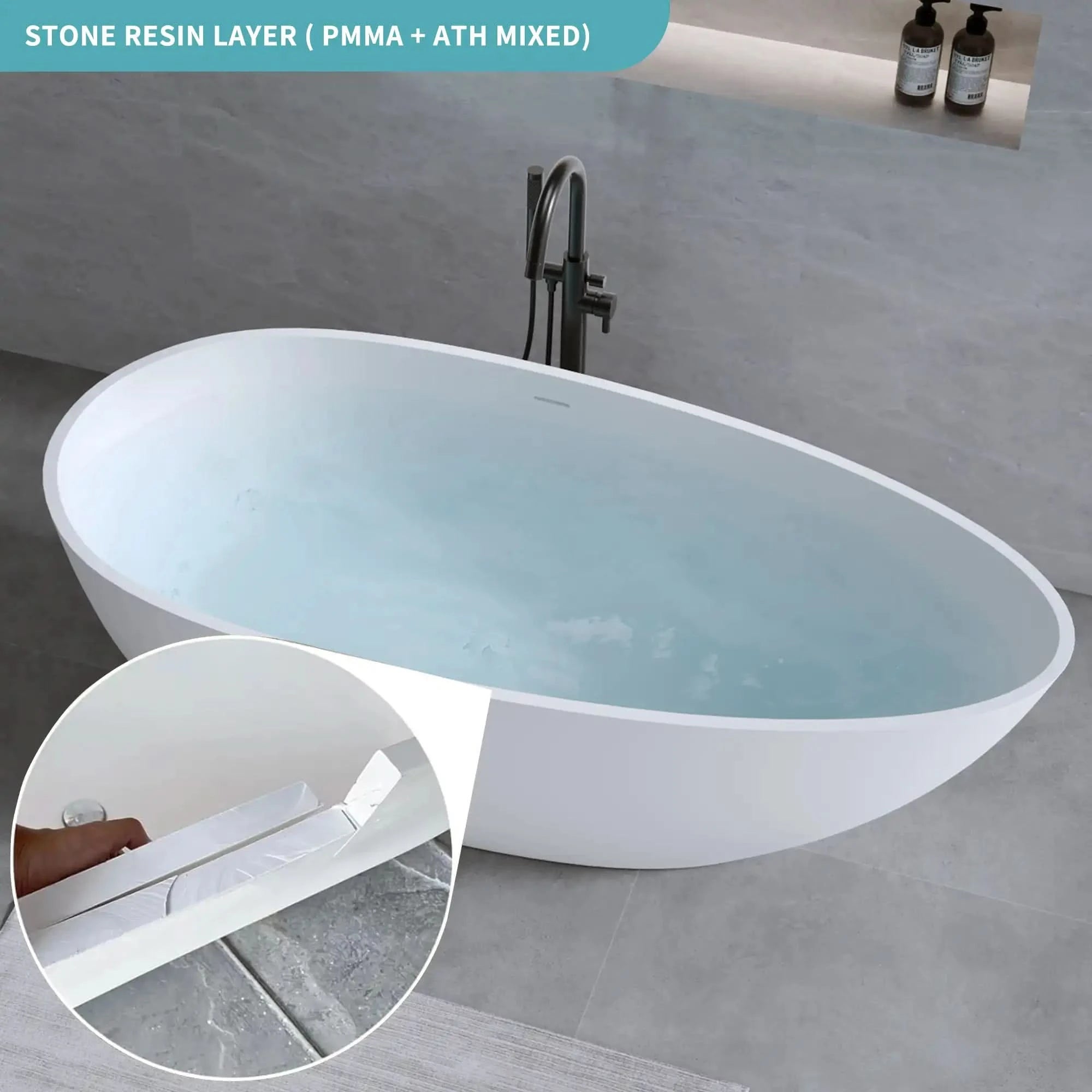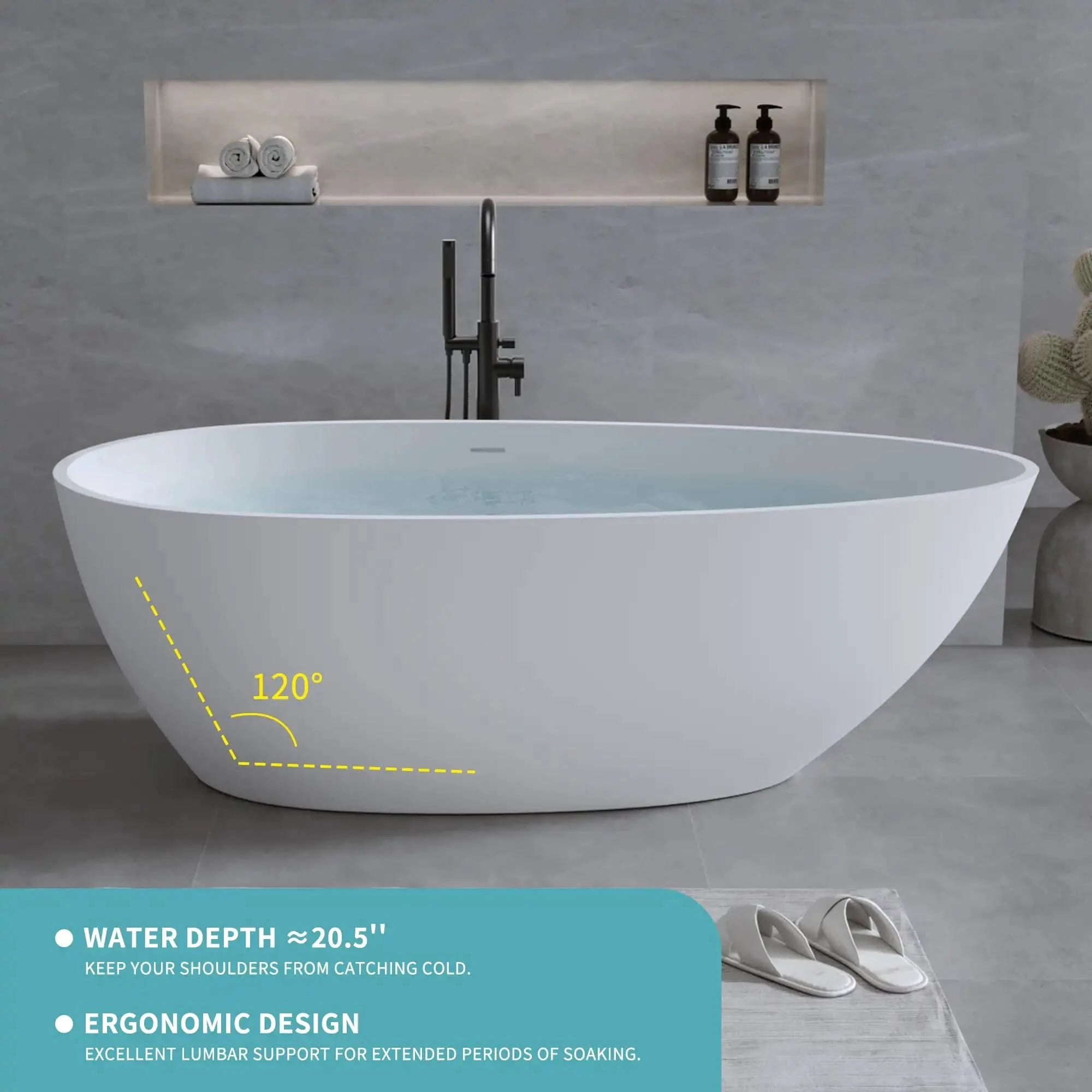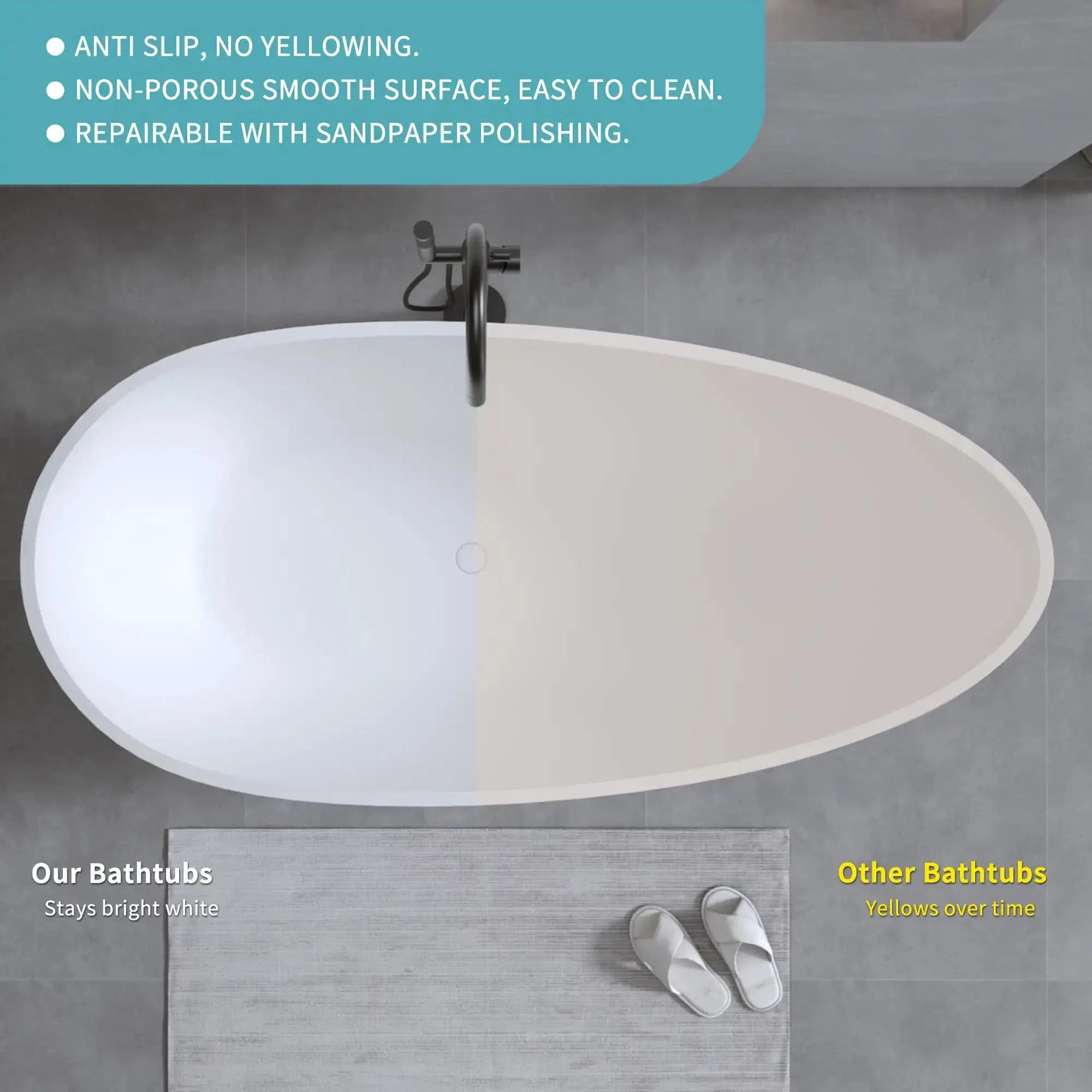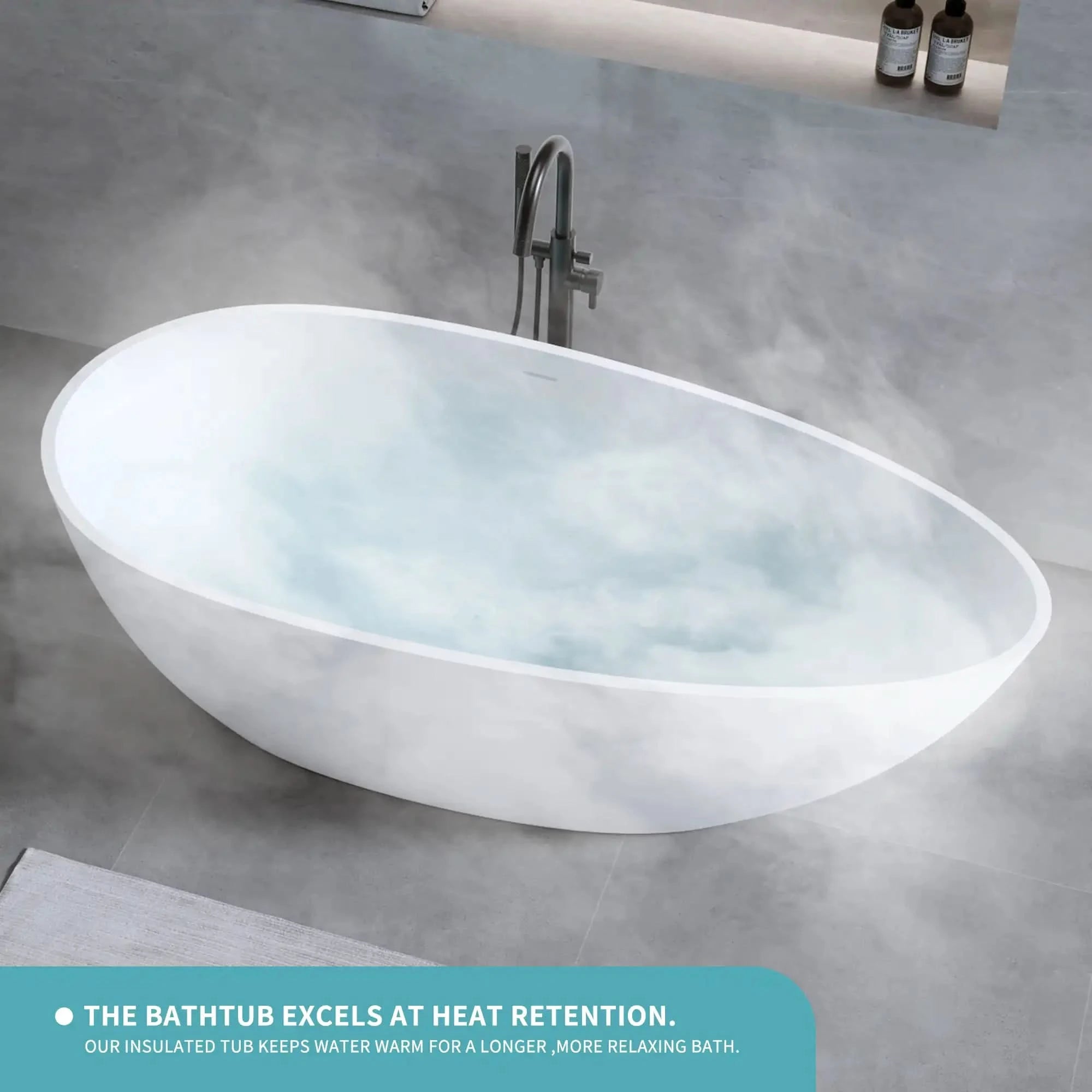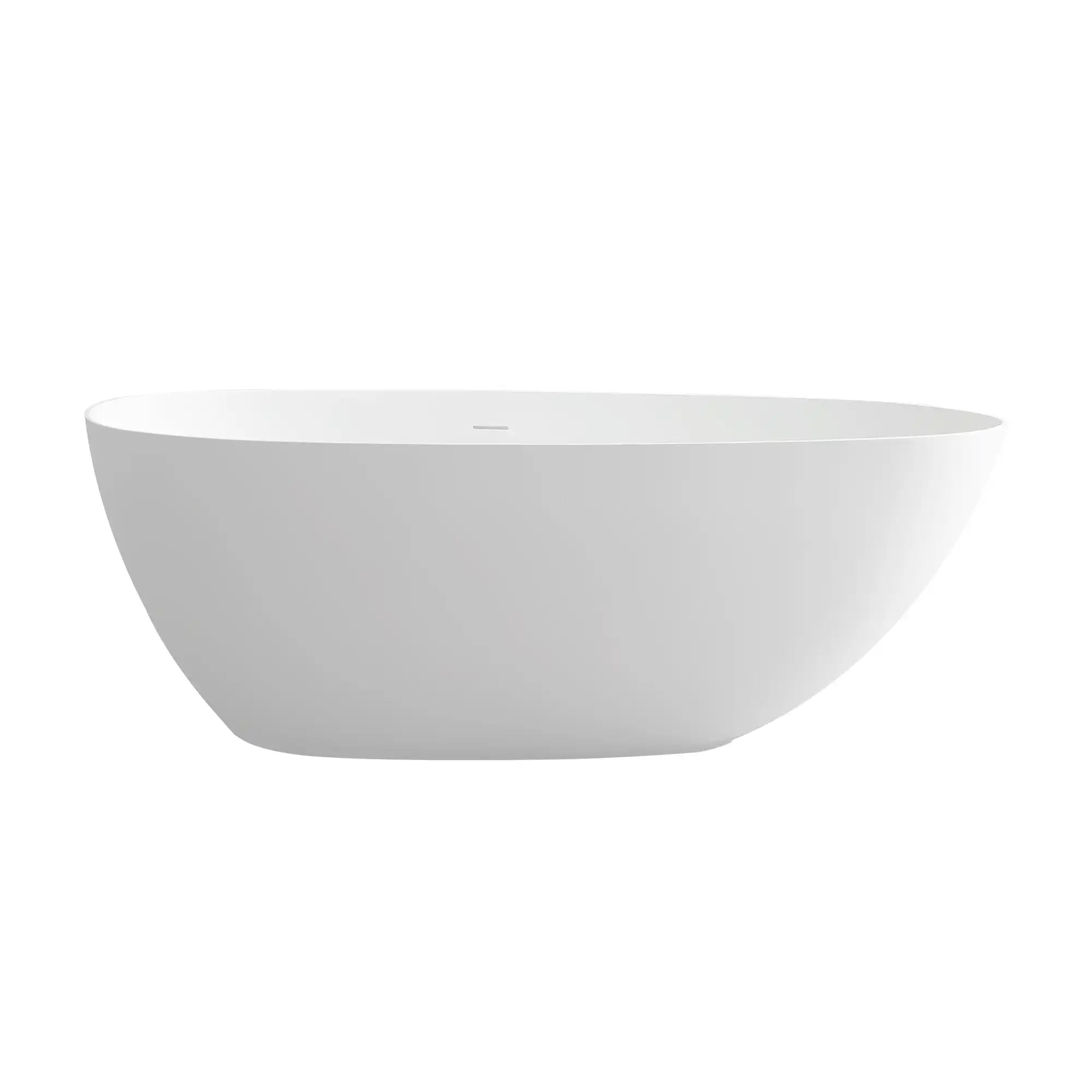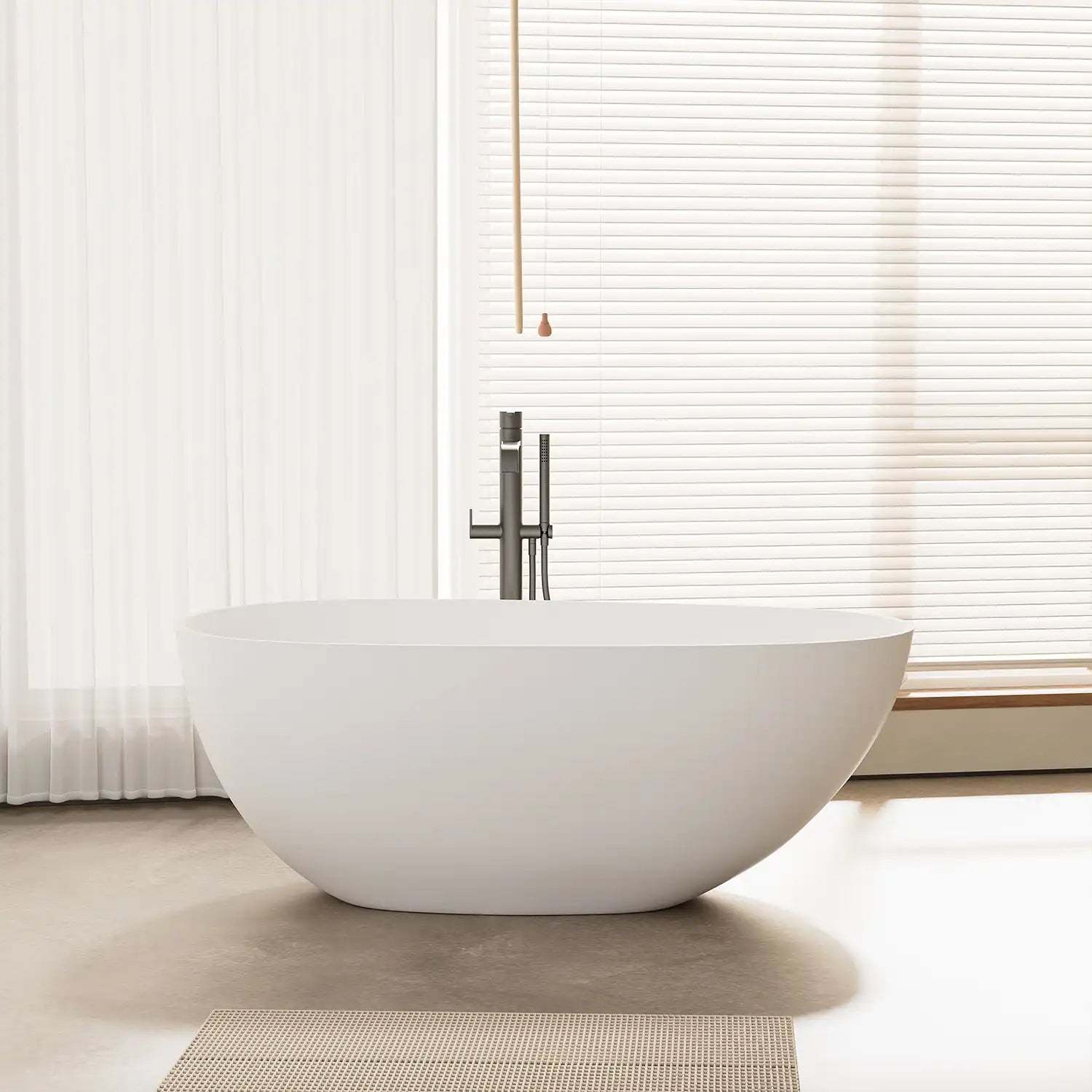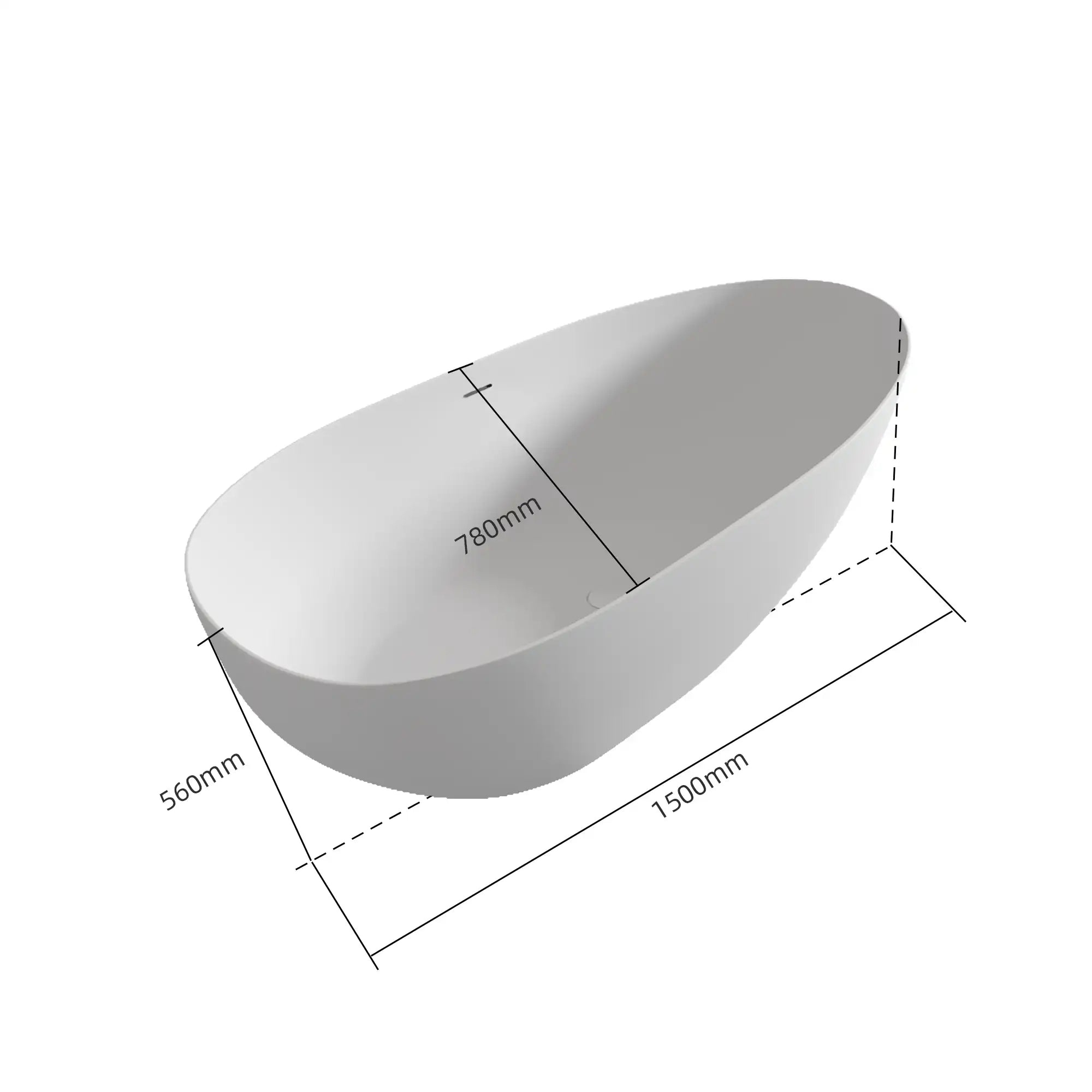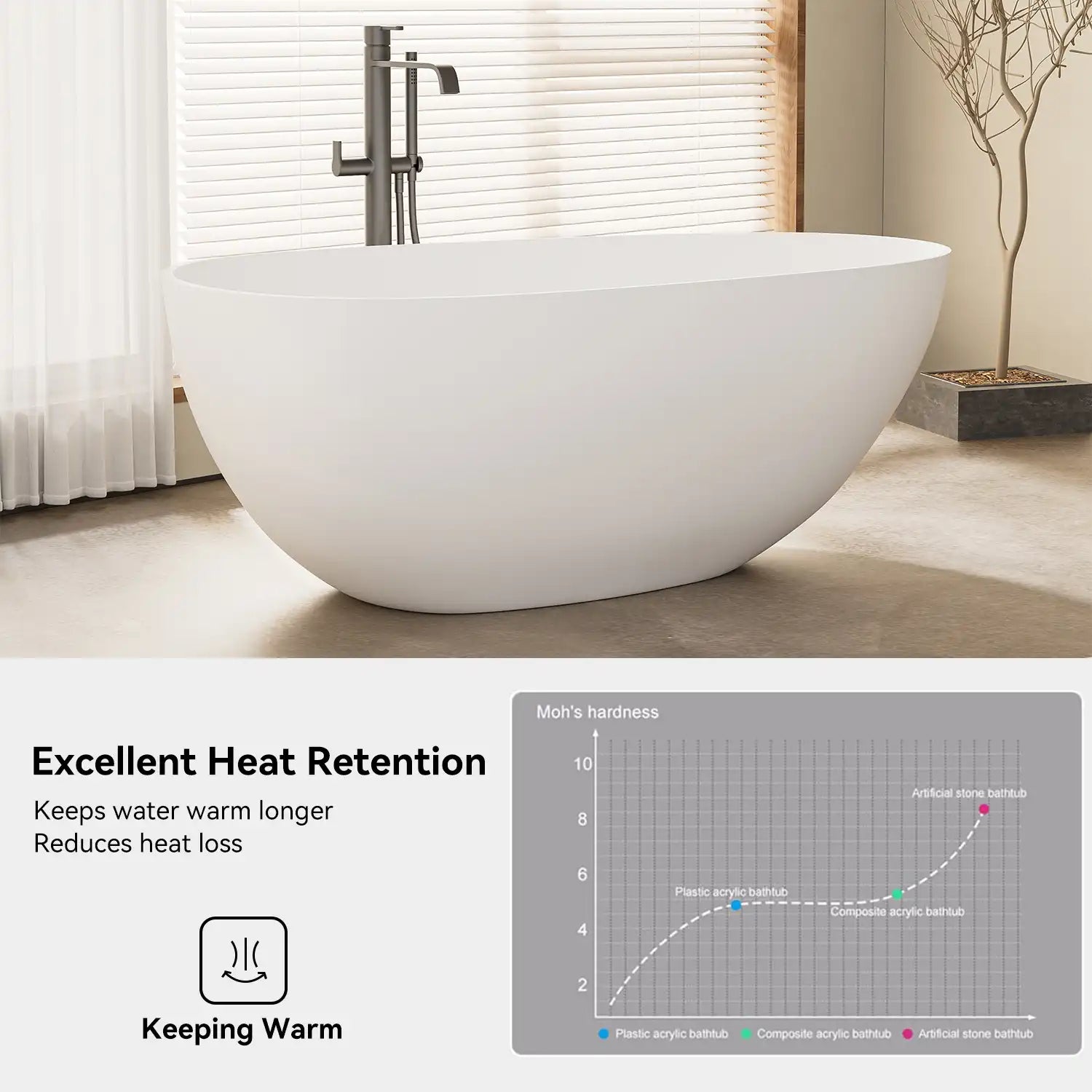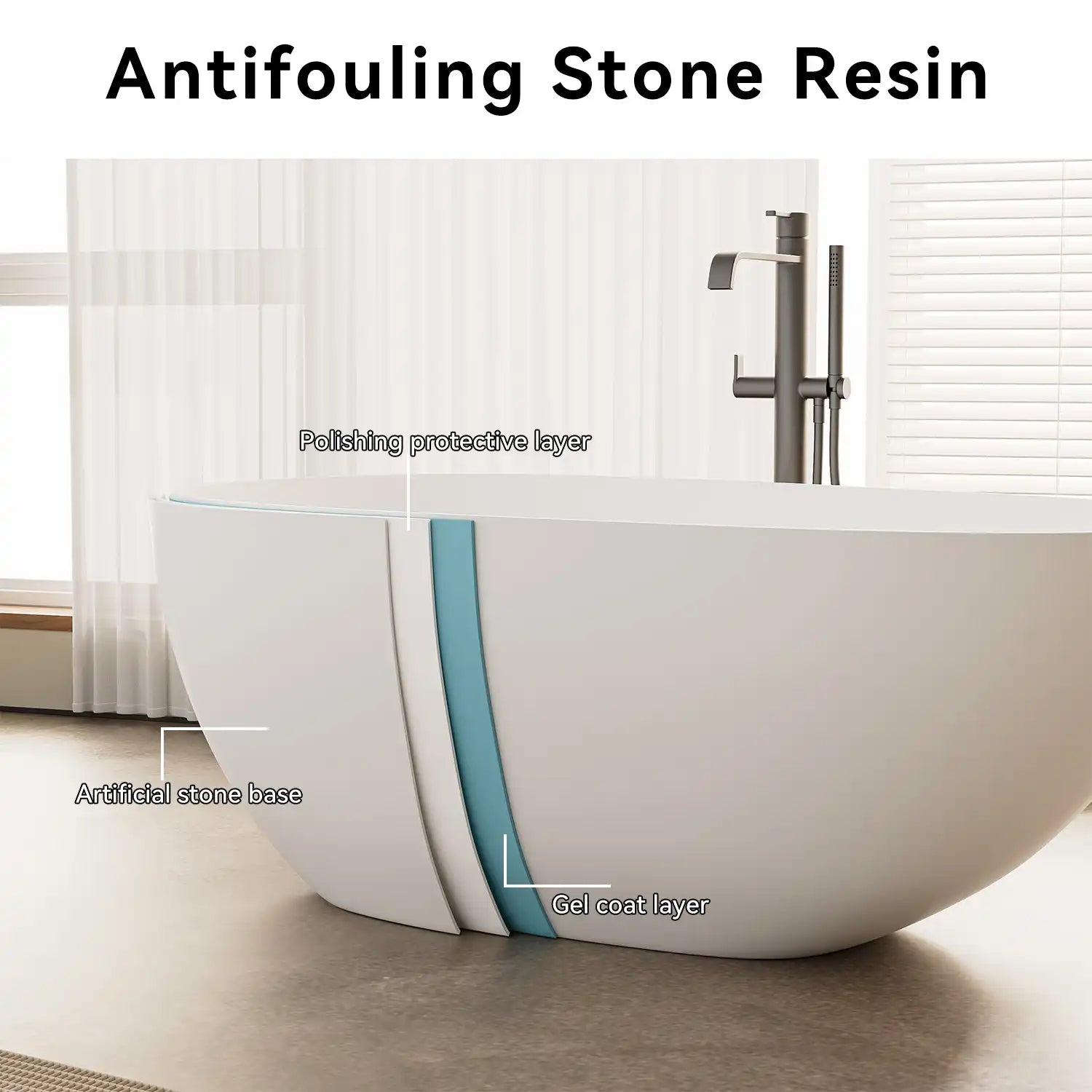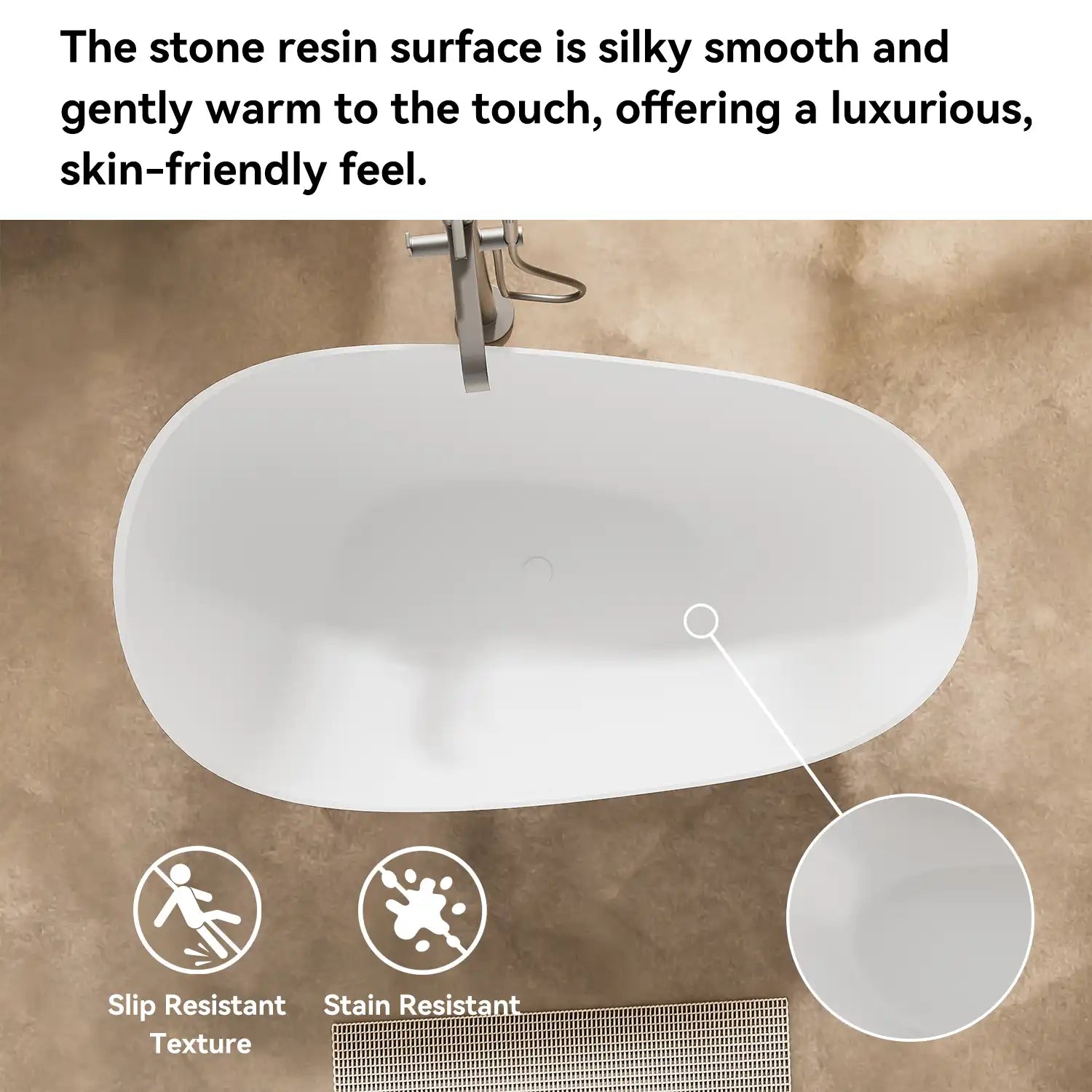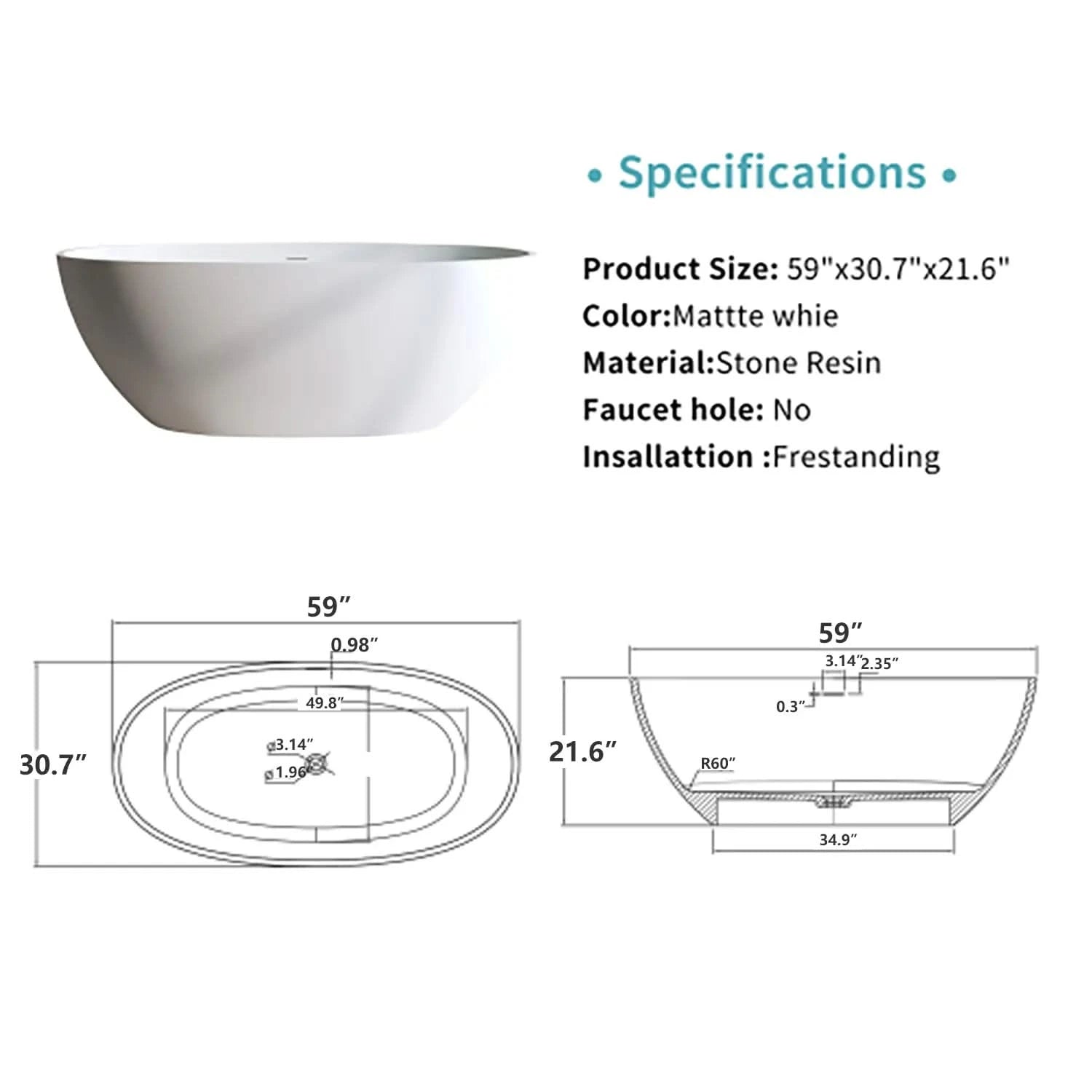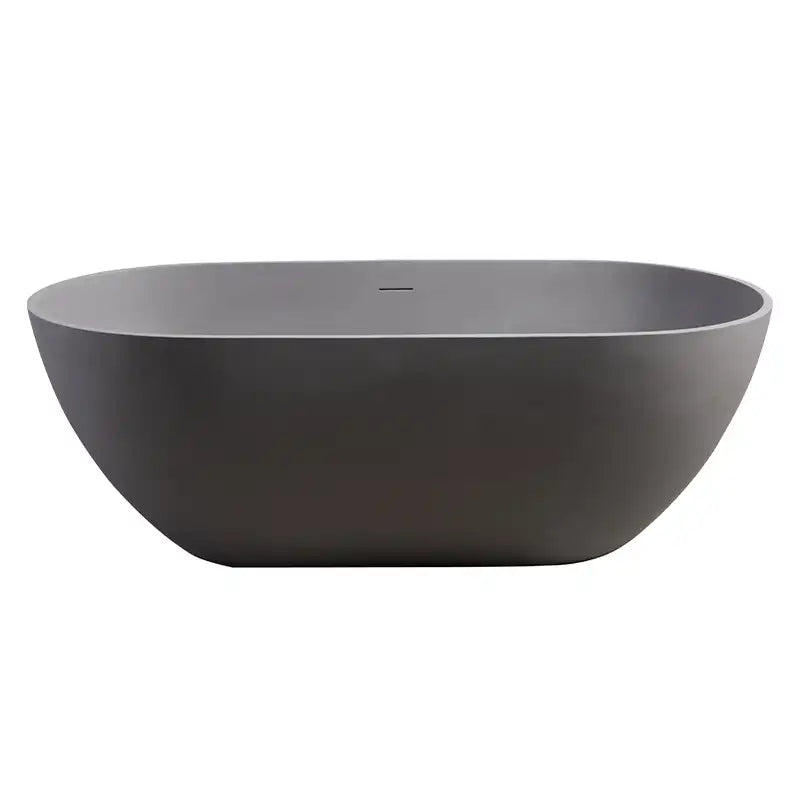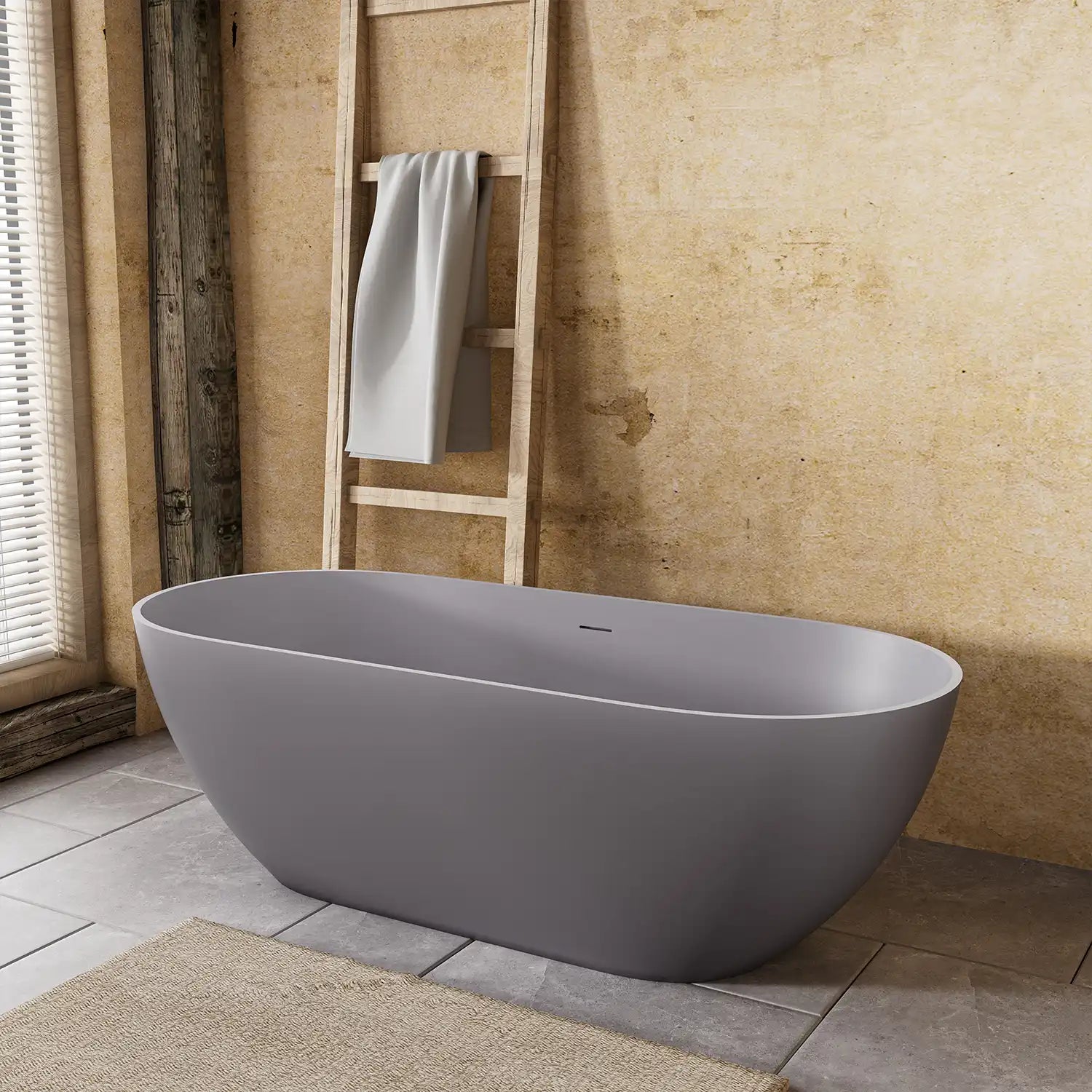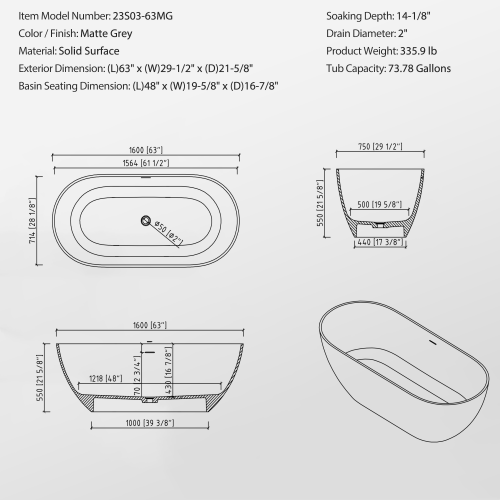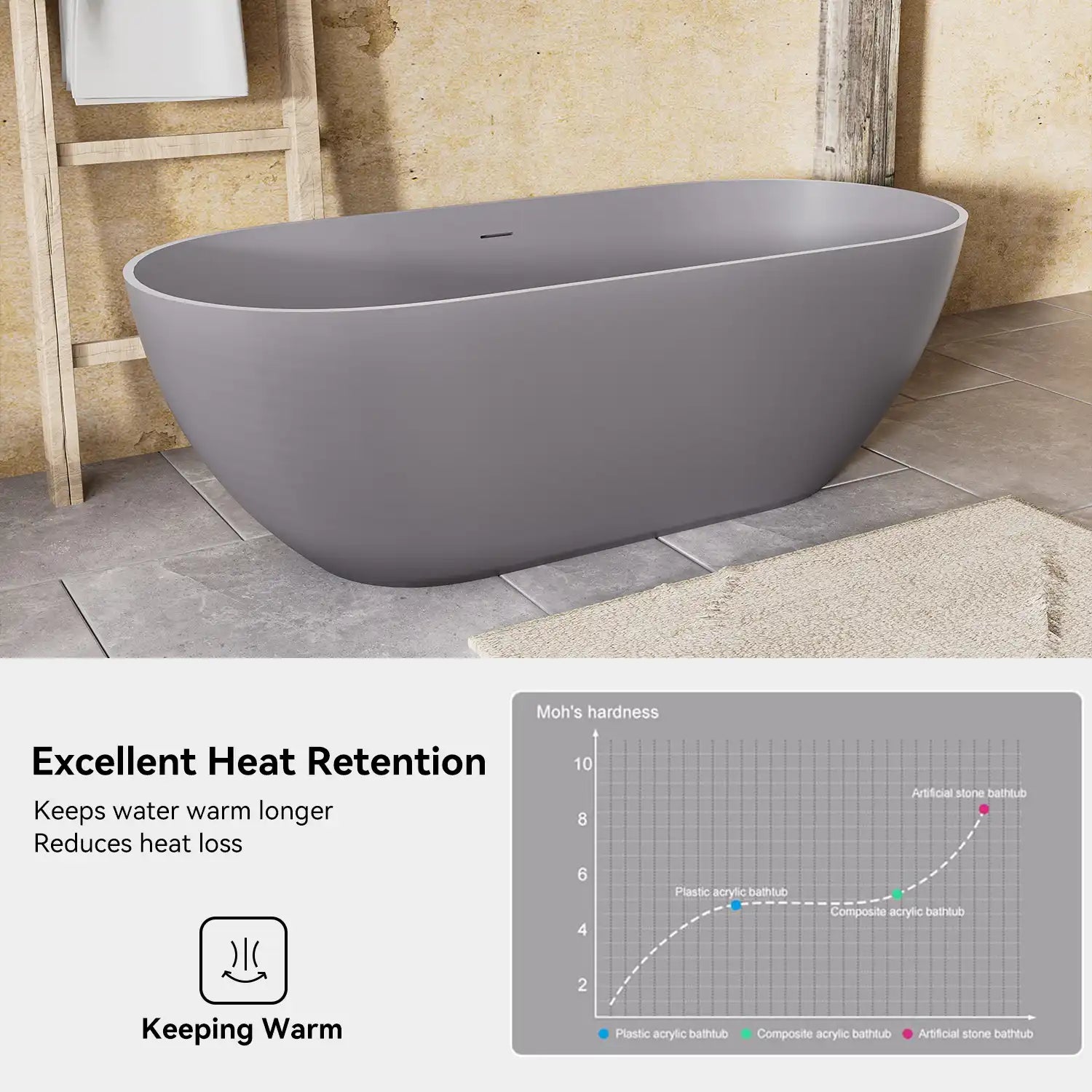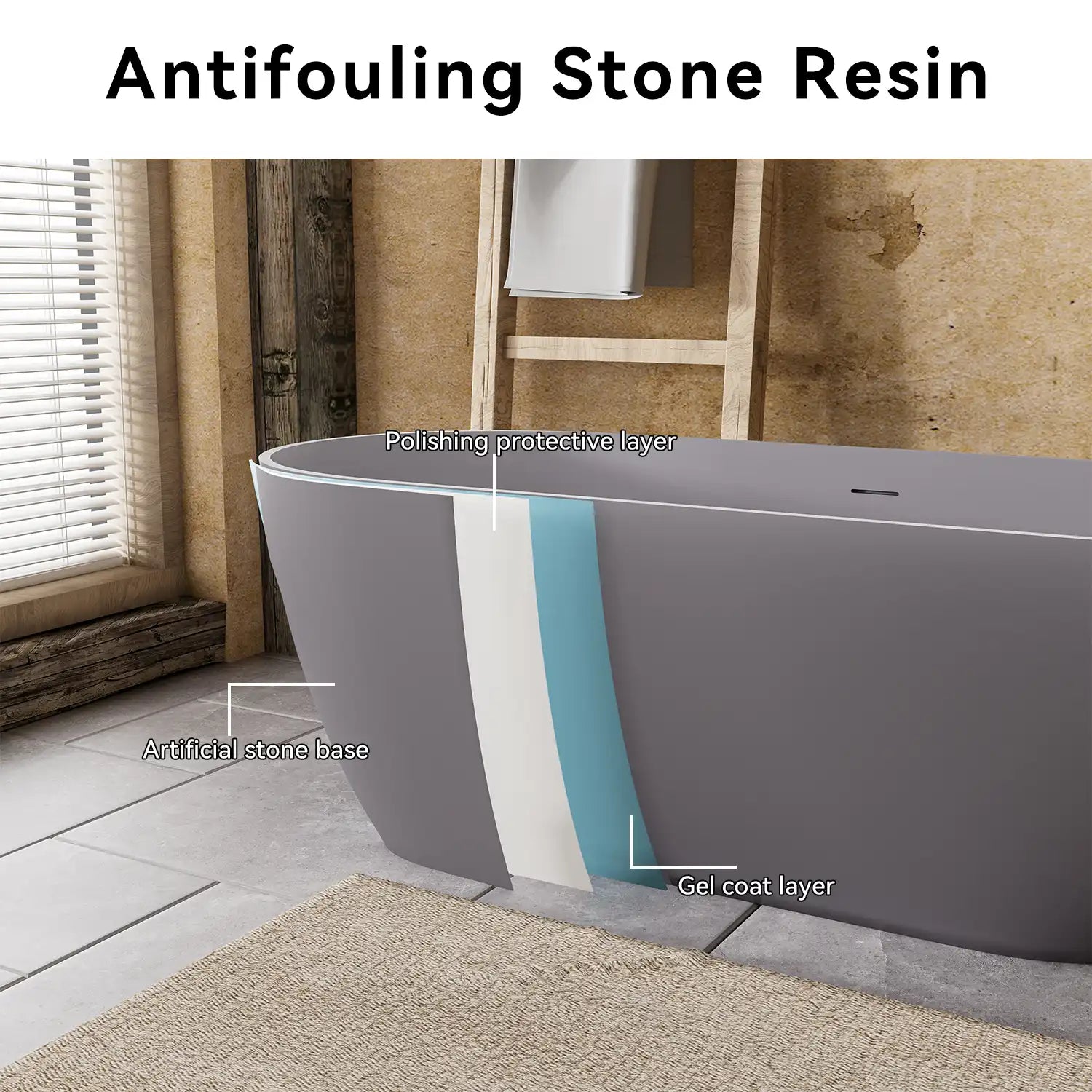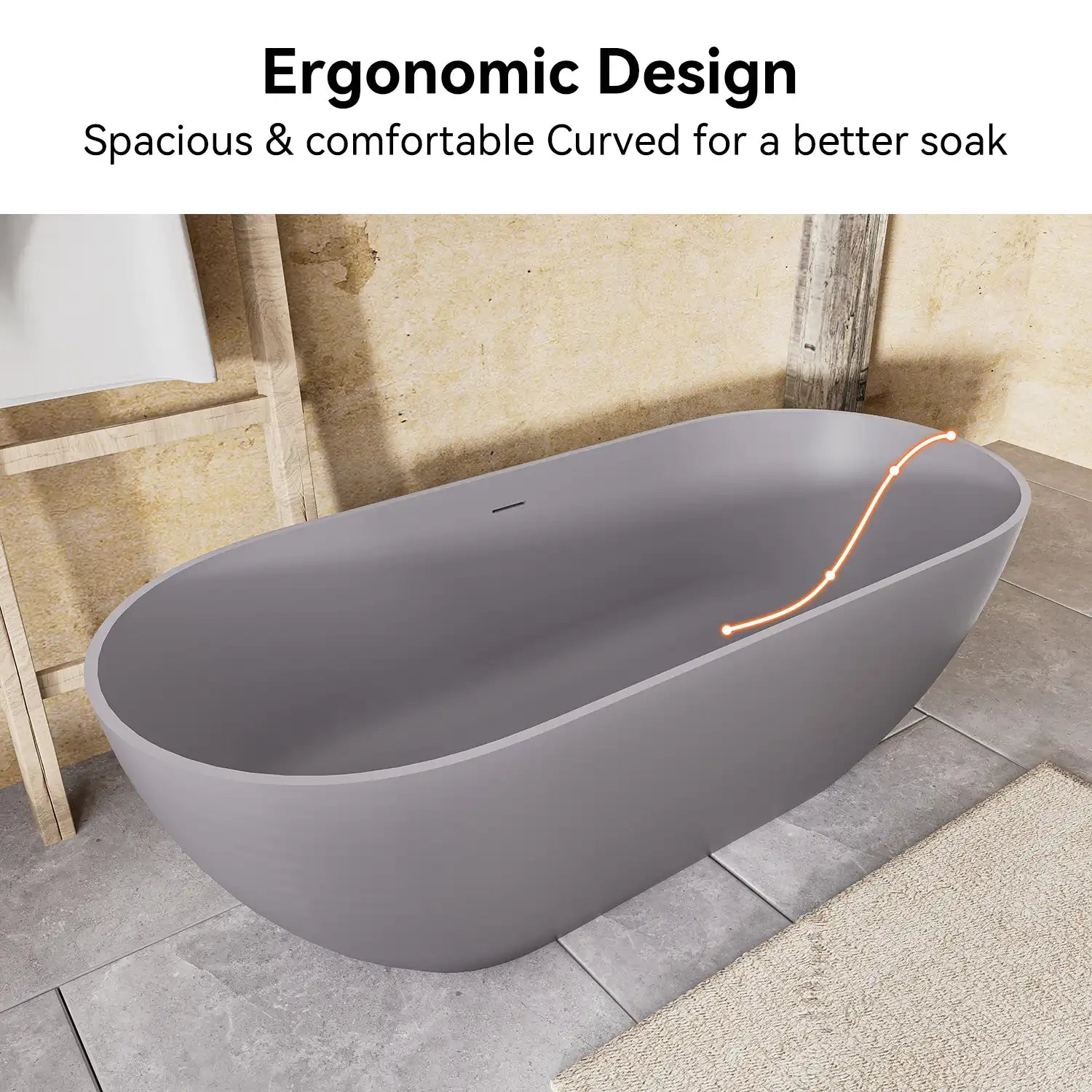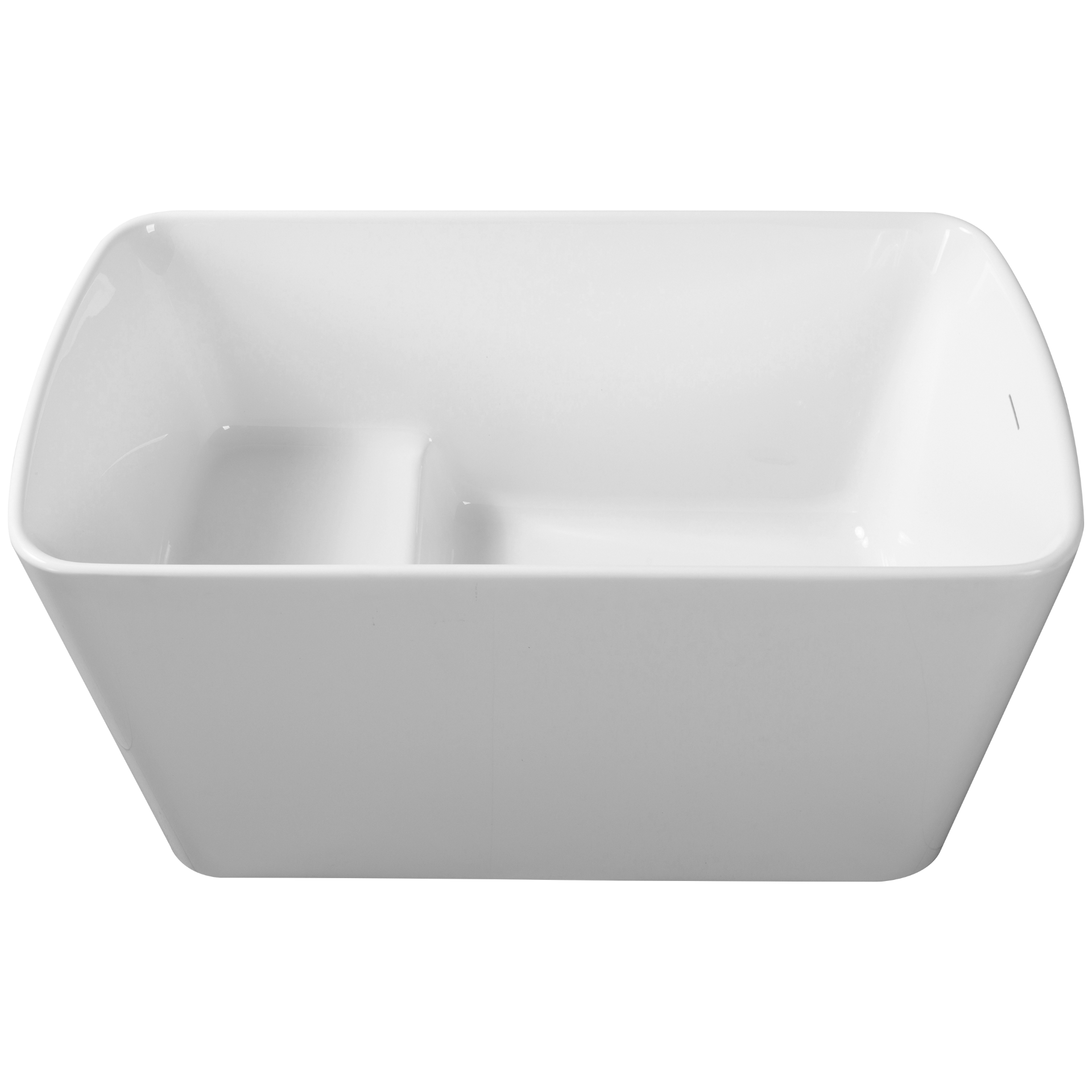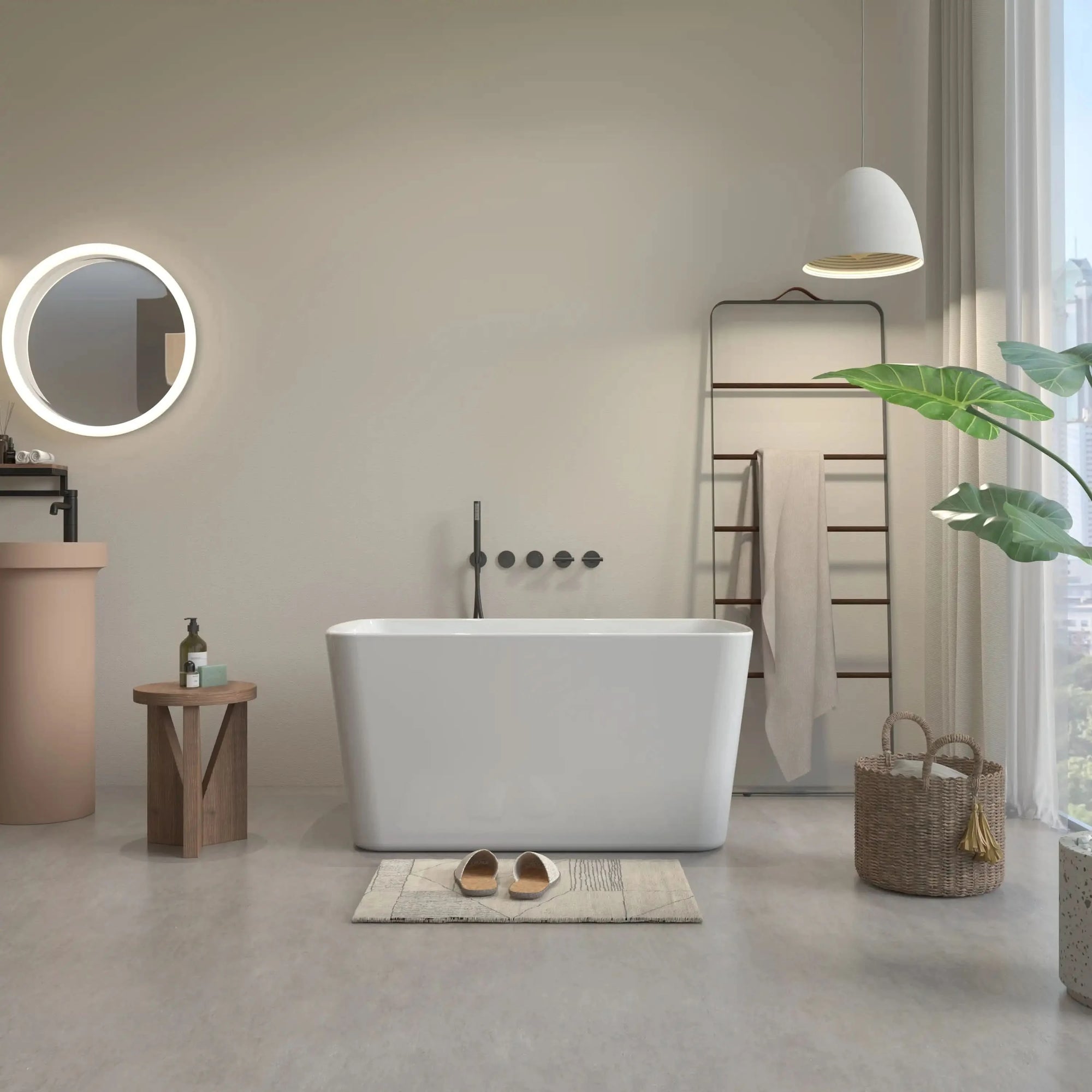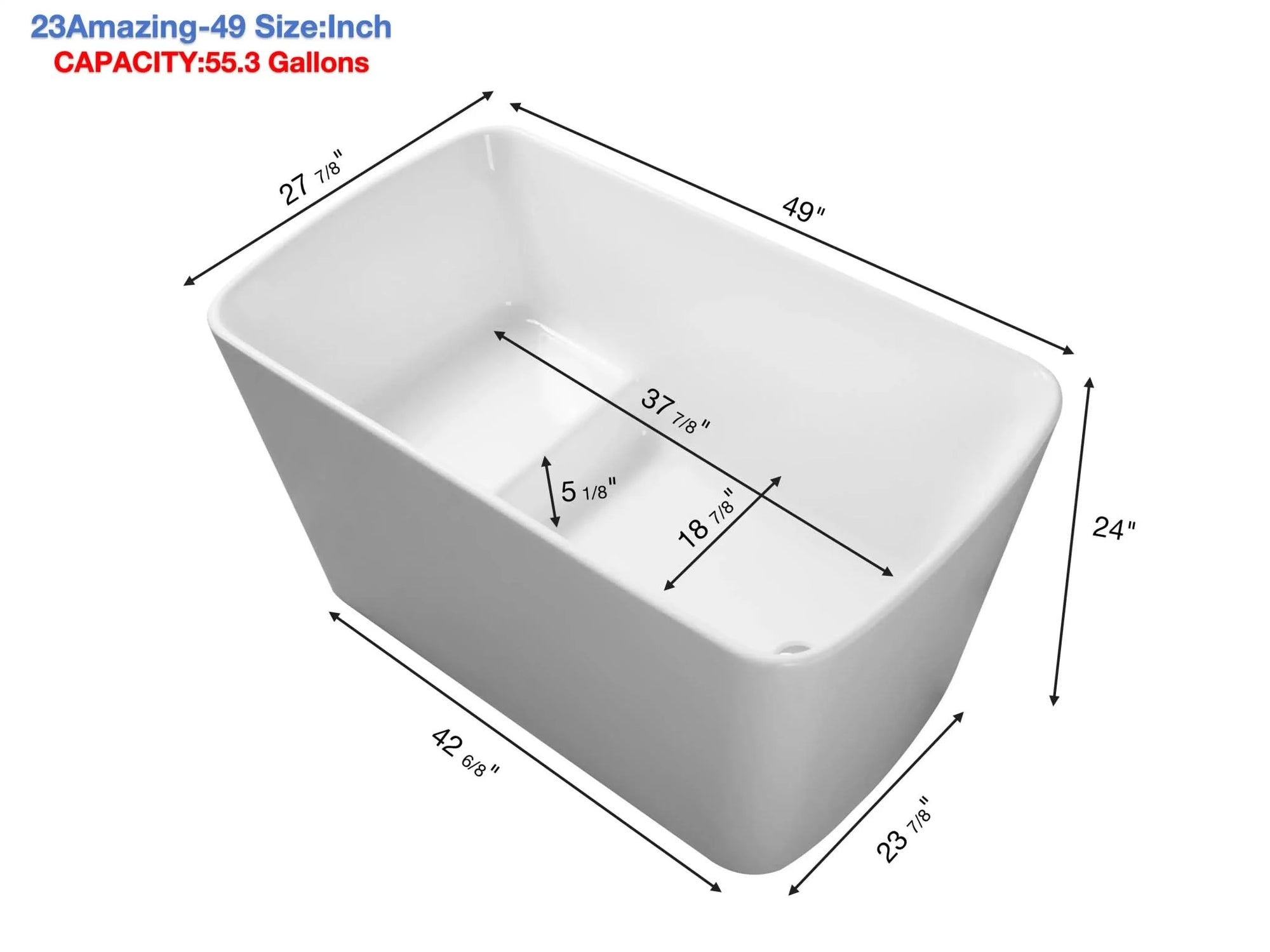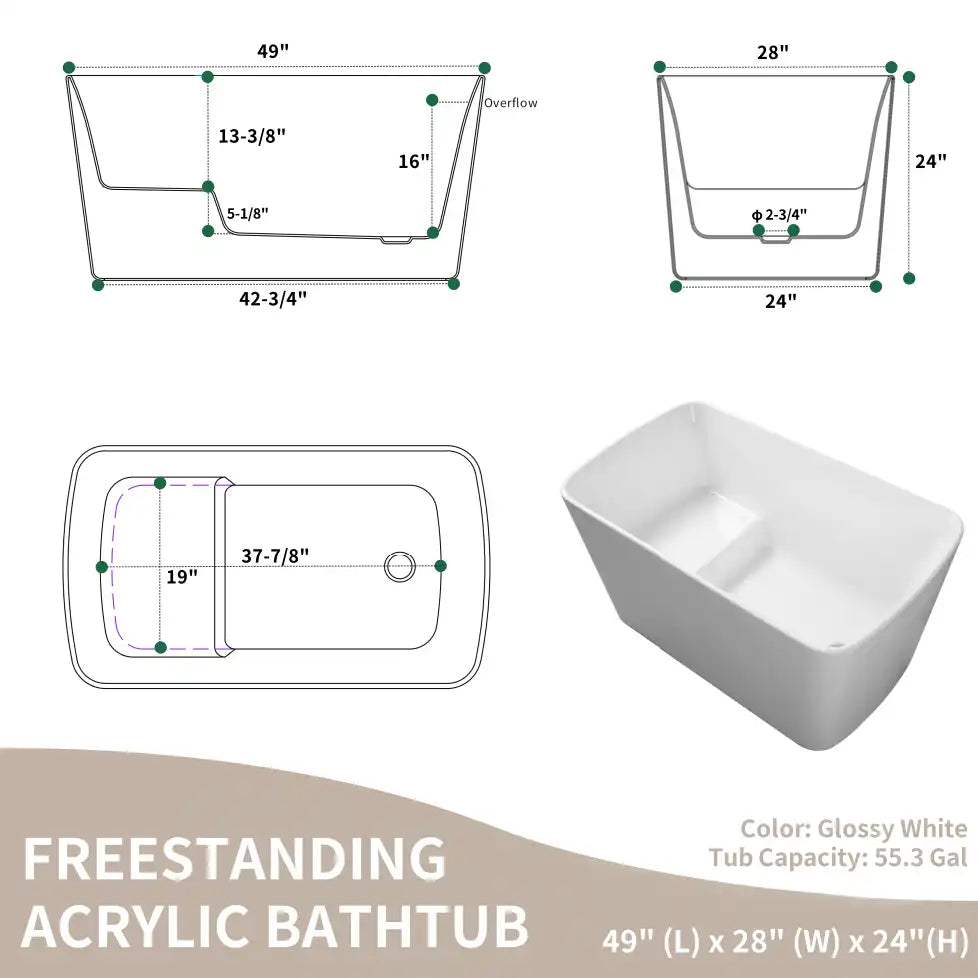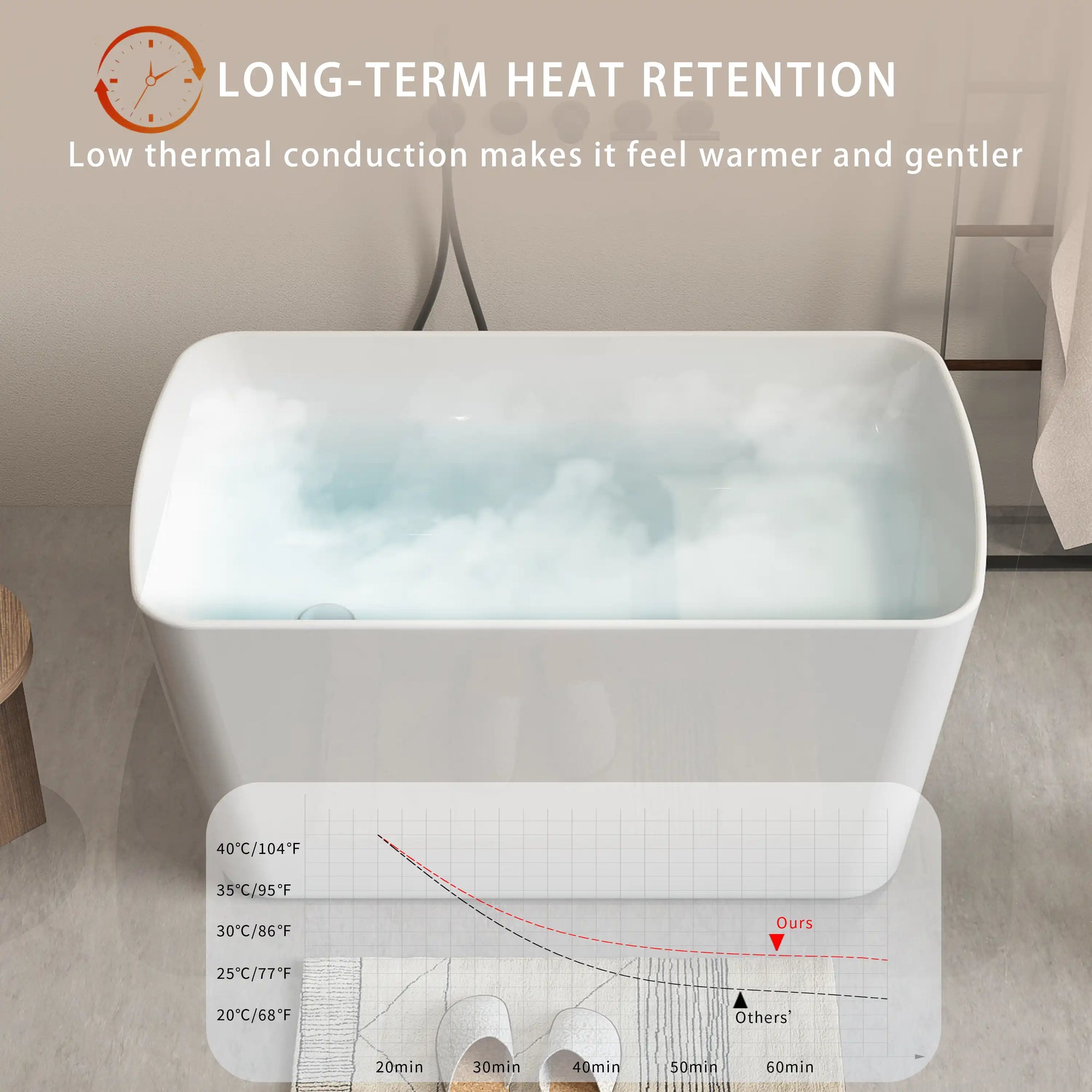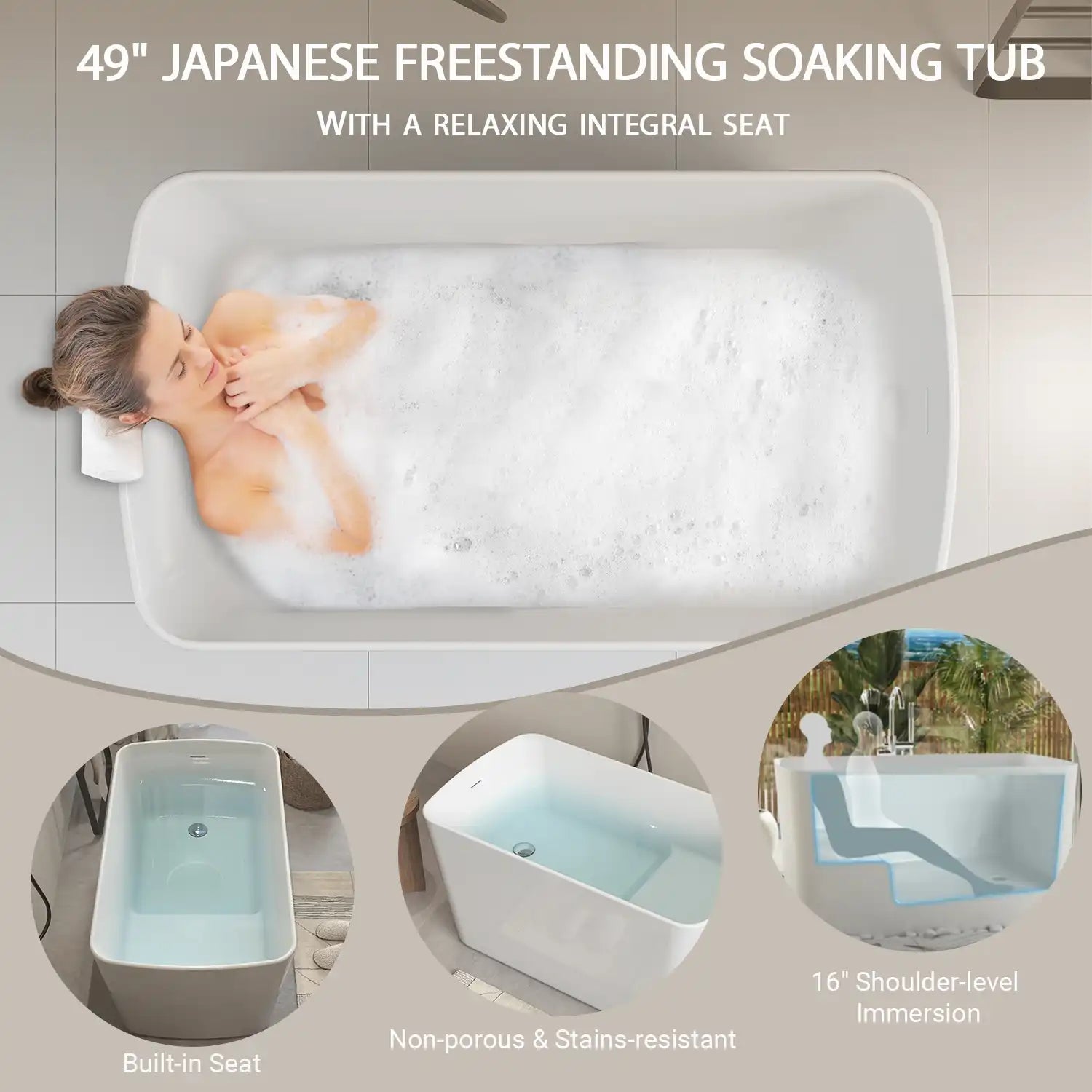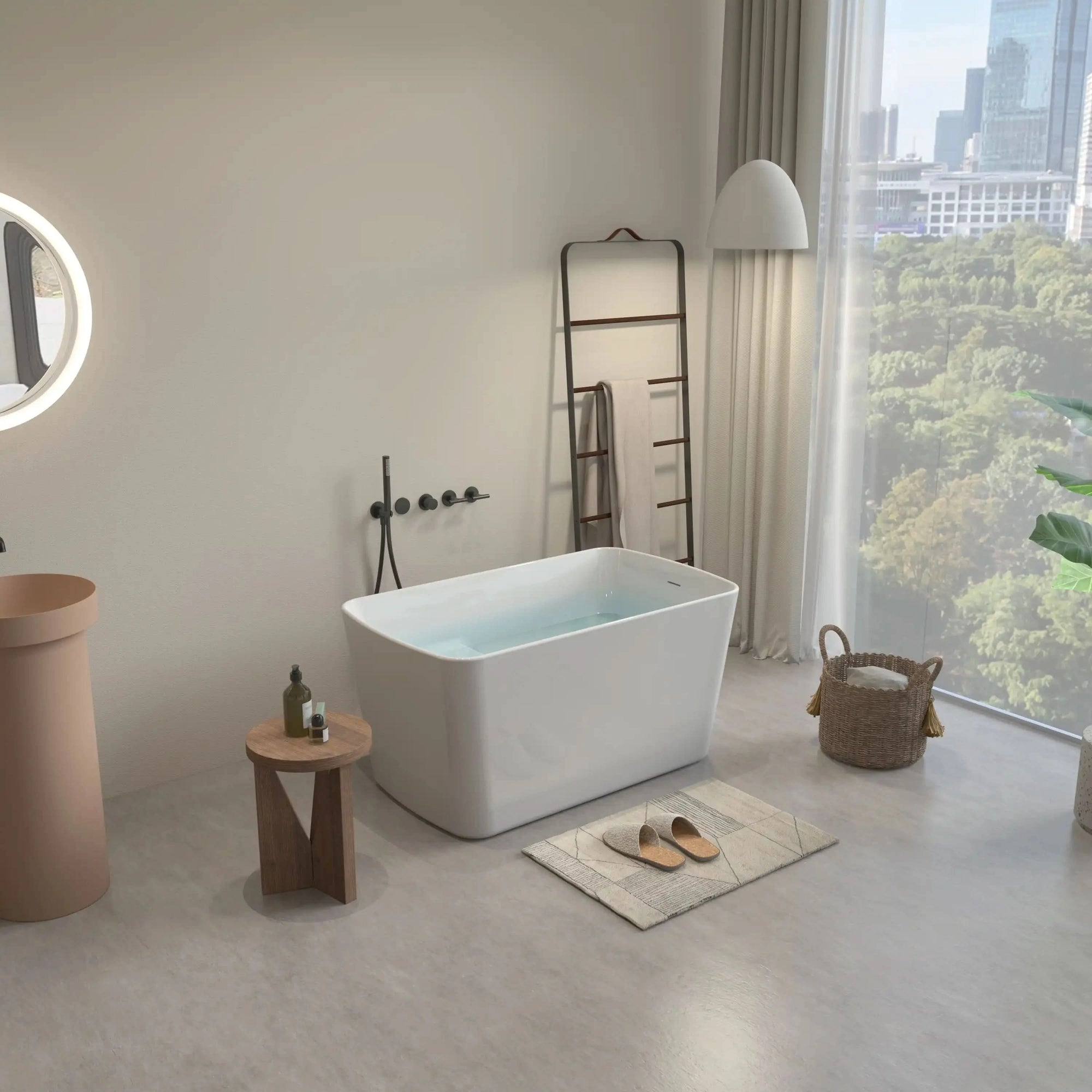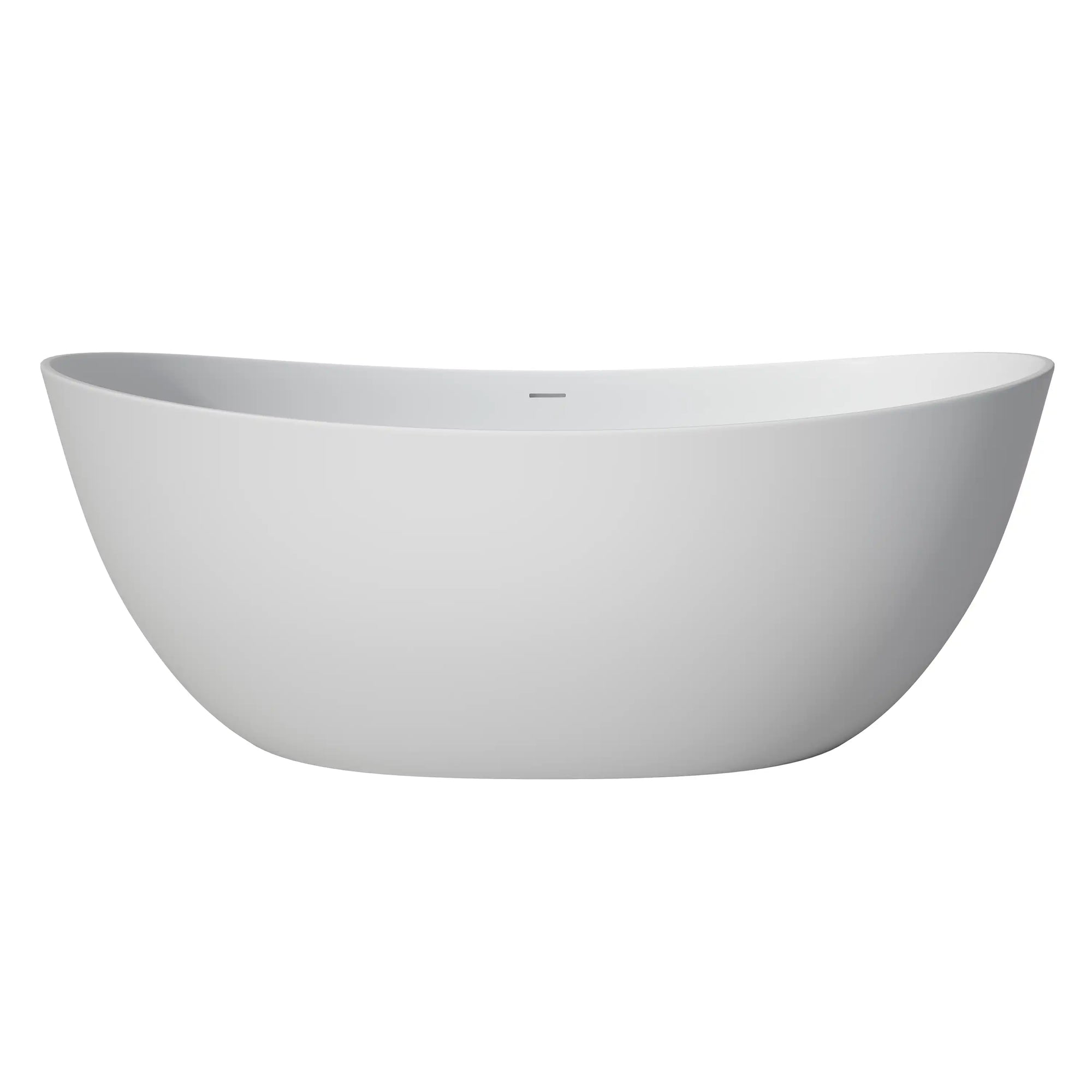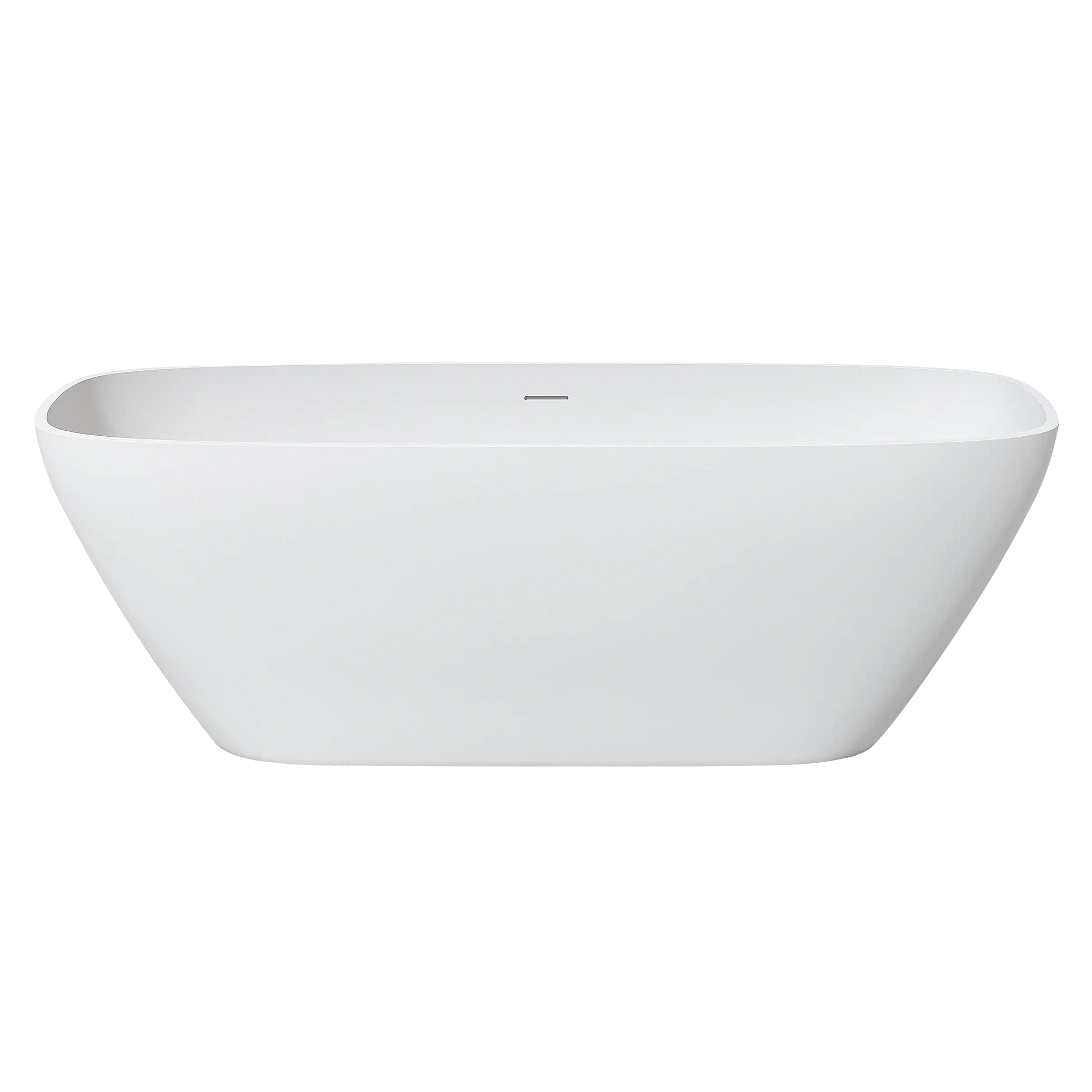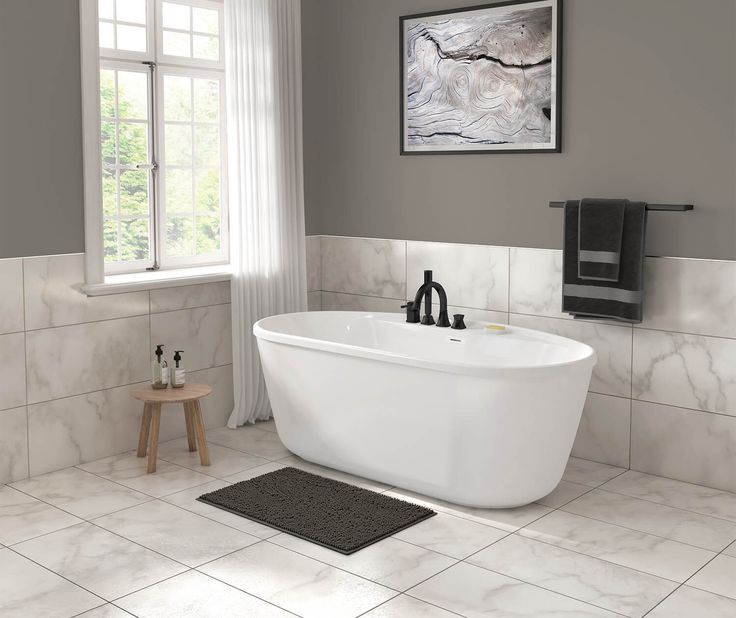Table of Contents
- Freestanding Soaking Bathtubs Against the Wall
- Freestanding Soaking Bathtubs in Corners
- Open Layout with Freestanding Soaking Bathtubs
- Choosing Comfortable Freestanding Soaking Bathtubs
- Freestanding Soaking Bathtubs: Cost & Value
- Freestanding Soaking Bathtubs for Renovations
- Style Ideas for Freestanding Soaking Bathtubs
- Conclusion
- FAQ
Introduction
In urban residences, especially in high-density areas like New York, Los Angeles, and Boston, every inch of space is extremely valuable. You may have a small but exquisite bathroom, yet during decoration, you often hear: "Taking a bath? That’s unrealistic in your space." But is a small bathroom really doomed not to have freestanding soaking bathtubs?
In fact, it is precisely in such limited spaces that a dedicated relaxation corner becomes all the more precious. According to the Houzz 2023 Bathroom Trends Report in the United States, more than 41% of American households have freestanding soaking bathtubs installed in a space of 100 square feet or less, and nearly 60% of them are in renovation projects. This indicates that people are starting to move past the misconception that “bathing equals luxury space” and are achieving both physical and mental healing through clever layout in compact environments.
Today, we will explore three efficient, practical, and aesthetically pleasing freestanding soaking bathtubs layout strategies. Along with that, we’ll share budget tips, installation advice, and style-matching suggestions to help you make the most of a small space—without compromising luxury.

1. Freestanding Soaking Bathtubs Against the Wall
Freestanding soaking bathtubs are often misunderstood as fixtures that must be placed in the center of the bathroom. In reality, placing them against the wall not only saves space but also reduces renovation costs—without compromising the aesthetic.
Applicable Scenarios:
- Long and narrow bathrooms
- Dual-functional master and guest bathrooms
- Layouts with usable wall drainage systems
Product Suggestions:
- Oval or slipper-style freestanding soaking bathtubs between 48 to 59 inches in length
- Materials like lightweight acrylic for upper floors or stone resin to enhance visual texture
Construction Tips: Select wall-mounted drainage or floor adapters to streamline plumbing. Add recessed niches above the tub for elegant storage without taking up additional floor space.
Why it works: Wall placement opens up center floor space, giving small bathrooms the illusion of openness while keeping the freestanding soaking bathtub as a style centerpiece.
2. Freestanding Soaking Bathtubs in Corners
In small bathrooms, corners often become dead space. But when used wisely, they’re ideal for placing freestanding soaking bathtubs. Tucking the tub into a corner doesn’t just maximize floor area—it creates a spa-like feel.
Recommended Applications:
- Natural light corners near windows
- Irregular layouts that can’t accommodate built-in tubs
Style Suggestions:
- Choose curved or asymmetrical-back freestanding soaking bathtubs for better body contouring
- Complement the layout with warm wall sconces, mirrors, and compact wooden platforms
Real User Case:
A homeowner in San Francisco used a 59-inch oval freestanding soaking bathtub in their 60-square-foot master bath. The corner layout not only retained passage space but made the entire room feel bigger and brighter.
Pro Tip: Inserting a freestanding soaking bathtub into a corner draws the eye diagonally across the room, which visually expands the perceived width of your bathroom.

3. Open Layout with Freestanding Soaking Bathtubs
In minimalist or Japanese wabi-sabi designs, blurring boundaries between zones has become a design staple. Making the freestanding soaking bathtub the main visual focal point of the bathroom adds elegance and maximizes every square foot.
Ideal For:
- Design-focused users who love spatial transparency
- Homeowners creating a "boutique hotel" bathing experience
Implementation:
- Use microcement or large-format tiles to unify the floor visually
- Incorporate linear drains to share slope across zones
- Use indirect lighting or recessed partitions to define zones naturally
User Experience: This layout allows effortless switching between "shower" and "soak" modes. Rather than fragmenting your bathroom, the freestanding soaking bathtub brings unity and modern luxury into one seamless zone.
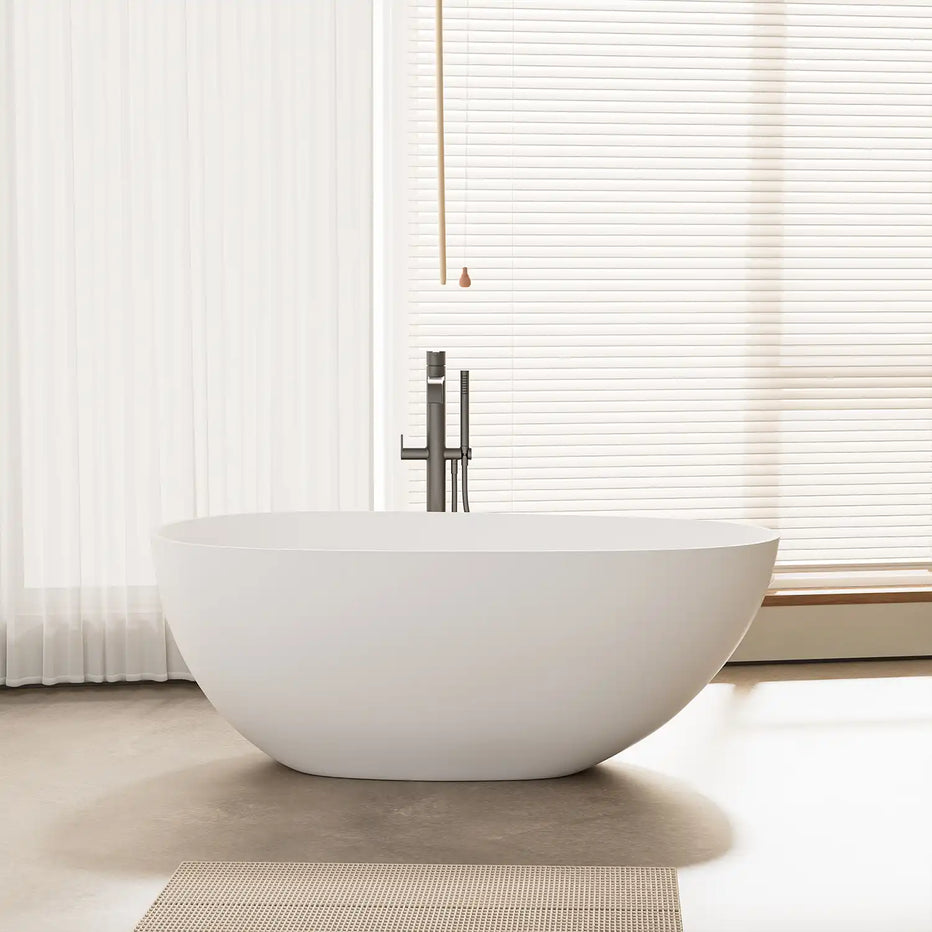
59" Solid Surface Soaking Bathtub
$2,259.99 | Sale • Save $440.00
Modern elegance meets durability in this deep, low-maintenance freestanding soaking bathtub.
Ultra-thin edges / Solid surface durability / Easy-to-clean non-porous finish / Scratch-repairable surface / Deep soaking comfort
4. Choosing Comfortable Freestanding Soaking Bathtubs
Some users install freestanding soaking bathtubs only to find them rarely used—too shallow, too tight, or simply awkward. To avoid your tub becoming a glorified laundry basket, prioritize comfort and immersion depth.
Key Specs to Look For:
- Immersion Depth: Minimum 16 to 18 inches for deep soaking
- Backrest Angle: 110°–120° for optimal ergonomic support
- Width: Narrower, elongated tubs are better suited for single-person baths in compact bathrooms
Home-Friendly Tips: Look for designs with rounded corners and anti-slip bases, particularly if kids or older adults will be using the tub. Add built-in rails or pair with a side table for added utility.
Best Practice: When selecting a freestanding soaking bathtub, try it in person if possible—what looks great in a catalog may not fit your comfort needs.
5. Freestanding Soaking Bathtubs: Cost & Value
When planning for freestanding soaking bathtubs, budgeting goes beyond the tub itself. Let’s break down the costs.
Bathtub Price Range:
- Acrylic models: $700–$1,800
- Stone resin or copper: $2,000–$4,500
- Designer or custom brands (e.g., Victoria + Albert): $5,000+
Installation Costs:
- Basic installation with standard drains: $600–$900
- Old tub removal + plumbing adjustments: $1,200–$1,800
Value Return:
According to Zillow, adding a freestanding soaking bathtub can increase resale value by 3%–5%, outperforming shower-only setups in mid to high-end markets.
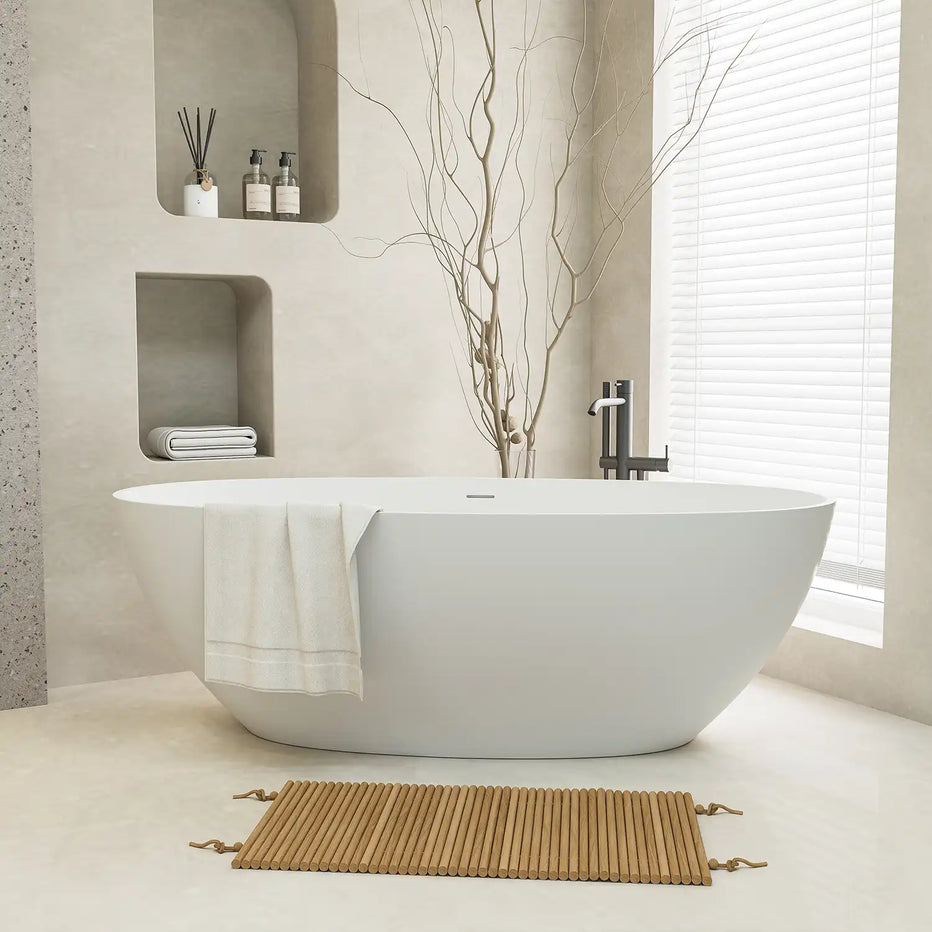
55" Durable Solid Surface Soaking Bathtub
$2,199.99 | Sale • Save $500.00
Durable, easy-to-clean freestanding soaking bathtub designed for lasting beauty and deep relaxation.
Solid surface durability / Easy-clean non-porous surface / Scratch-repairable finish / Stain-resistant coating / Deep soaking comfort
6. Freestanding Soaking Bathtubs for Renovations
You don’t need to be in a new build to enjoy freestanding soaking bathtubs. Many renovation projects now include lightweight freestanding tubs that work in older structures.
Structural Compatibility:
- Reuse floor drain locations with adapters
- Opt for built-in skirted designs to hide visible plumbing
- If needed, add water heater capacity or install hybrid instant water systems
Load Consideration: Most modern acrylic freestanding soaking bathtubs weigh under 80kg, safe for standard residential floors and compliant with North American structural norms—no special support needed.
Renovator Tip: Use adjustable feet or foam underlays to stabilize the tub and protect older floor substrates.
7. Style Ideas for Freestanding Soaking Bathtubs
Don’t just think of freestanding soaking bathtubs as utility items—they’re a visual focal point. Here’s how to align them with your interior style:
- Minimalist Style: White oval acrylic tub + gray matte tiles + ultra-slim faucet
- Urban Loft: Matte black tub + industrial copper pipe faucet + exposed brick with LED accents
- Japanese Natural: Stone-texture tub + wood platform + greenery + natural light access
- Modern American Classic: Metal clawfoot tub + white subway tile walls + champagne gold accents
By positioning freestanding soaking bathtubs at the heart of your bathroom layout, you elevate the space into something more personal, elegant, and experiential.
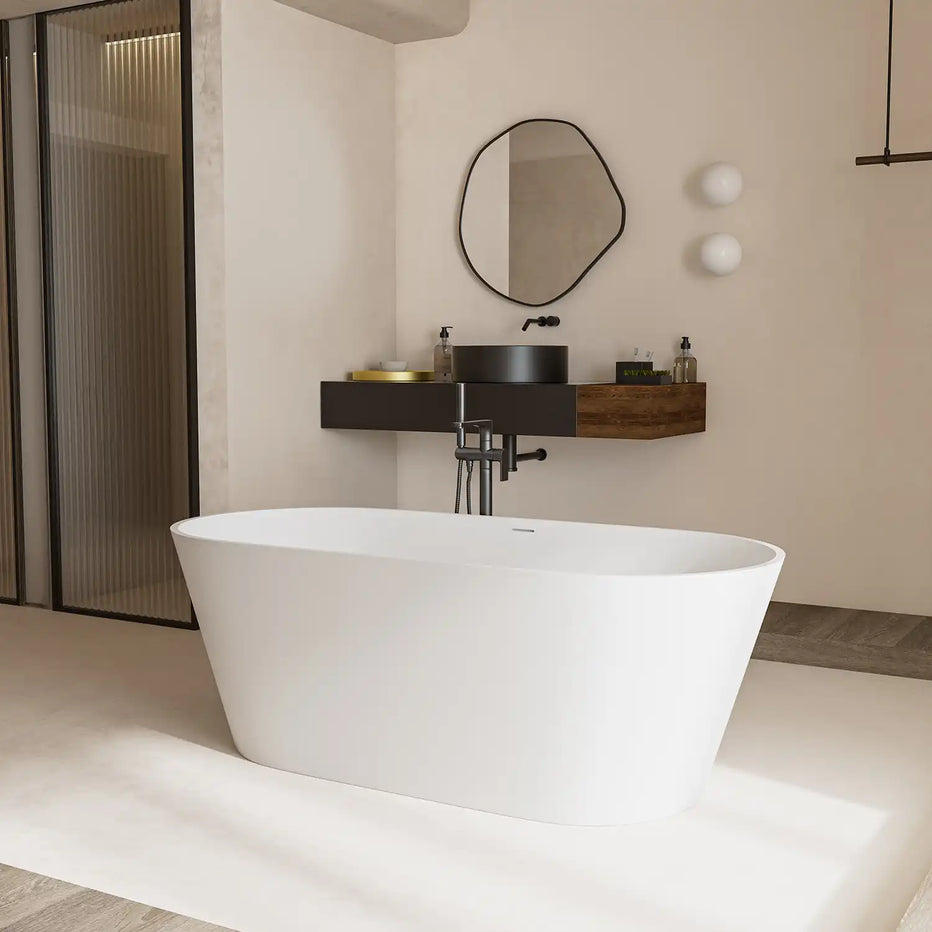
63" Durable Solid Surface Soaking Bathtub
$2,339.99 | Sale • Save $560.00
Durable and elegant, this freestanding soaking bathtub offers spa-level comfort with effortless maintenance.
Solid surface durability / Easy-to-clean non-porous surface / Scratch-repairable finish / Modern drain kit included / Deep soaking for full-body relaxation
Conclusion
Whether you're renovating a micro master bath or upgrading an old apartment bathroom, freestanding soaking bathtubs are no longer out of reach. With the right dimensions and design, small bathrooms can offer a soaking experience on par with luxury spas.
Choosing a freestanding soaking bathtub isn't just about hygiene or aesthetics—it’s about slowing down, breathing deeply, and reclaiming peace in a fast-moving world.
Browse our curated selection of freestanding soaking bathtubs for small spaces, or book a consultation to receive layout advice tailored to your bathroom dimensions and style. The freedom to soak begins here.
FAQ
Q1: Are freestanding soaking bathtubs hard to clean?
A: Not really. Many models use anti-stain glazing or antibacterial acrylic. For daily maintenance, a damp cloth and neutral cleaner work perfectly. Closed bases or ground-contact designs reduce dust buildup.
Q2: Can I add side tables or storage around the tub?
A: Absolutely. Wall-mounted trays, corner shelves, or wooden caddies pair beautifully with freestanding soaking bathtubs and increase functionality without crowding.
Q3: Can the bathtub location be changed later?
A: Some freestanding soaking bathtubs feature flexible drain systems. If the piping isn’t hard-fixed, repositioning is possible. Plan for this in the initial install to avoid future complications.
Q4: Will a freestanding soaking bathtub make my small bathroom feel cramped?
A: On the contrary. Light-colored, narrow-profile tubs combined with uniform flooring and clear glass panels can make a bathroom feel larger and more cohesive.
Q5: Do you offer installment plans?
A: Yes. We accept Shop Pay Installments, Affirm 0% financing, and other flexible payment methods to help you afford your dream freestanding soaking bathtub.
Related Articles:
Double Slipper Freestanding Soaking Bathtubs: A Perfect Blend of Comfort and Style
Bathtubs with Claw Feet vs Freestanding Bathtubs: Which is Best?
